Introduction
North Africa was a major centre of ceramic production in the Roman and late antique Mediterranean, particularly renowned for the manufacture of amphorae and so-called African Red Slip Ware (ARS), fine tableware made with a red fabric and a transparent slip that was widely distributed up to the second half of the seventh century AD (Bonifay Reference Bonifay2004; Bonifay and Reynolds Reference Bonifay, Reynolds, Rutgers, Christie, Jensen and Magness2023; Hayes Reference Hayes1972; Mackensen Reference Mackensen2008; Reynolds Reference Reynolds, Stevens and Conant2016)Footnote 1. Considerably less attention has been paid to late antique common and handmade wares, despite their importance as markers for the scale and reach of regional economic systems and their potential to provide insights on production, workshop organisation, ceramic distribution patterns and the spread of technologies (Leitch Reference Leitch2013; Reynolds Reference Reynolds, Stevens and Conant2016; Wickham Reference Wickham2005, 720–28).
This article aims to address this challenge by presenting the first comprehensive study of the so-called late antique African ‘painted ware’ (hereafter APW), a type of wheelmade pottery produced from the fifth to at least the mid-seventh centuries, decorated in red and brown with geometric and abstract floral and faunal decoration patterns. These ceramics are characterised macroscopically by relatively fine pastes ranging from a red to a creamy and greenish colour. Though this distinctive pottery group has been recognised for over a century (Bonifay Reference Bonifay2004; Carton Reference Carton1915; Fulford Reference Fulford, Fulford and Peacock1984; Février Reference Février1965) and is frequently noted in late antique layers in northern Tunisia, little is known about its chronology, production, location, distribution and technology, and the stylistic repertoire of the decoration has yet to be studied. Detailed investigation of painted ware has been complicated by the fact that no kilns have been found, though production centres at Thuburbo Maius, Sejnane and Tiddis have been tentatively proposed (Berthier Reference Berthier2000; Hayes Reference Hayes and Humphrey1976; Peacock Reference Peacock, Fulford and Peacock1984).Footnote 2
Substantial numbers of APW excavated by the DAI, INP and UCL at the neighbouring sites of Bulla Regia and Chimtou offer an ideal opportunity to reconsider this ware within the late antique, North African context. This article first presents an overview of the distribution of published late antique APW in North Africa and a critical reassessment of their typology, decoration and chronology based on stratified finds. It proposes a detailed typology of painted ceramic vessel types and decoration patterns based primarily on the material from Bulla Regia and Chimtou and other published types. It then presents the results of petrographic and chemical analysis on 57 painted sherds from the two sites which provide information on the composition and technology of the wares. Raman spectroscopy was conducted on 23 sherds to identify the pigments used for the decoration. Comparison of the composition of the Bulla Regia and Chimtou APW with raw clay samples collected near the sites and ceramics of a likely local provenance (architectural tubuli and large storage jars, similar to Bonifay Reference Bonifay and Lavan2013, fig. 1, category 3) identified a ‘local signature’ for the APW which most likely reflects an unlocated workshop in North-West Tunisia which produced painted wares. The article concludes with an integrated discussion of the results of the archaeological and archaeometric analyses, and identifies possible APW regional production groups and distribution patterns, thus contributing to a better understanding of regional ceramic economies.
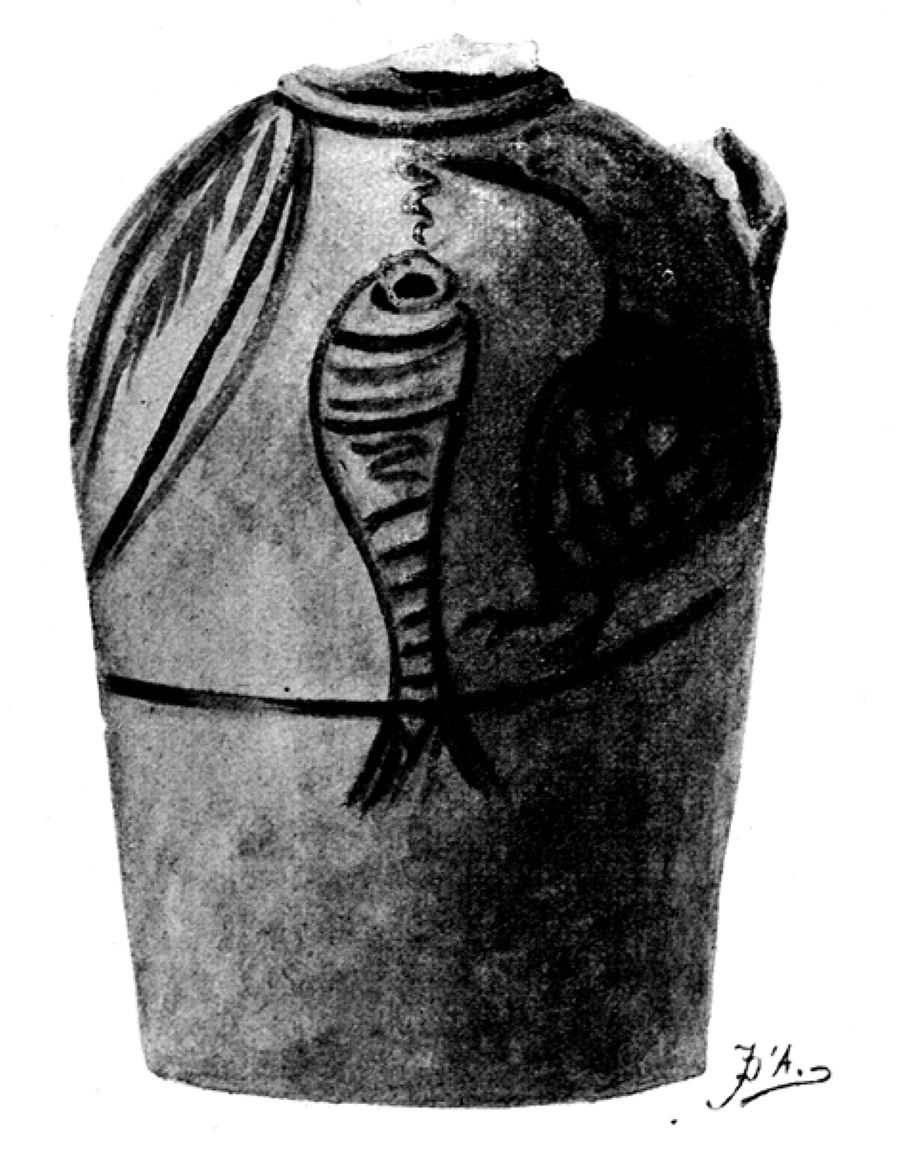
Figure 1. African Painted Ware (APW) jar (Carton Reference Carton1915, Figure 3).
Previous research on late antique APW
Louis Carton was the first to identify and describe this distinctive ware in the region of Jendouba (colonial Souk El Arba) and in the later layers in his excavations at Bulla Regia (Manigold Reference Manigold1906; Carton Reference Carton1909, 583; Reference Carton1911, 601). In 1914, his astonishing discovery of many intact jars of differing sizes filled with foodstuffs in the so-called ‘Church of Alexander’ at Bulla Regia (a building destroyed by fire) allowed him to make some preliminary observations; the jars were wheelmade with a well-fired yellowish fabric and decorated in black and a reddish-brown paint which was applied with a brush before firing (Figure 1). He noted a great diversity of forms, ranging from large pot-bellied jugs with small handles to amphorae with narrower toes: a frustoconical form with an inverted base and a wide cylindrical neck was common. The decoration was also highly variable: many were simply decorated with black and brown alternating zones, as well as more complicated decorations featuring plants, foliage, birds and fish motifs (Carton Reference Carton1915). A wealth of other finds, including several Byzantine crosses, led him to suggest a date of the late sixth or early seventh centuries (Carton Reference Carton1915, 123–26; cf. Baratte Reference Baratte, Rocca, Piraud-Fournet and Baratte2022, 205–16). He saw these ceramics as a crucial transition in the African ceramic tradition between Punic ceramics and contemporary handmade Kabyle ceramics (for an overview of early modern handmade painted ceramics in North Africa, see Guichard and Hamel Reference Guichard and Hamel2015).
Despite Carton’s comprehensive description and the startling preservation of so many intact vessels, there was little further interest in APW until the 1950s and 60s when a series of important late antique excavations took place in Algeria at Sétif, Tébessa and Tiddis before independence (Amraoui Reference Amraoui2017, 295–98 for overview). In Tunisia, the UNESCO ‘Pour Sauver Carthage’ campaigns in the 1970s and 1980s prompted a new interest in the wares and provided a tightly dated chronology for their introduction at Carthage. Hayes published several painted sherds from a small jug, and a shallow bowl, and other closed vessels from an ecclesiastical complex and a late antique house found during the University of Michigan excavations at Carthage (Hayes Reference Hayes and Humphrey1976, 89). The Carthage ceramics had a light orangey-brown fabric and brownish-red painted geometric patterns. Large quantities of painted ceramics with similar fabric were noted during work at Thuburbo Maius for the Corpus des Mosaïques de Tunisie, and Hayes suggested that there may have been a painted ware workshop at the site based on the comparatively large amount of APW compared with the few pieces in Carthage. In the 1980s, Fulford published a more detailed typology of painted ware forms found outside/inside the city walls (Avenue du President Habib Bourguiba site), including two big bowls, several closed forms (closed forms were difficult to define due to poor preservation) and a conical flask. The ceramics uniformly had a fine pale cream or buff fabric (fabric 2.4) and red-brown or purplish black paint (Peacock Reference Peacock, Fulford and Peacock1984, 16; Fulford Reference Fulford, Fulford and Peacock1984, 225). Peacock identified similarities between thin sections of painted ware and modern handmade painted wares from Sejnane, but also suggested APW could have been produced in Carthage (for Sejnane ceramics, Sekik and Louhichi Reference Sekik and Louhichi2007). Bonifay briefly revisited the ware in his comprehensive work on the late antique pottery of Tunisia and suggested a continuity of production into the seventh century based on stratified finds, but did not revisit the typology (Bonifay Reference Bonifay2004, 301–303). The typologies provided by Hayes and Fulford thus remain the main reference point for APW.
The painted wares from Bulla Regia and Chimtou
The rediscovery of some of Carton’s painted jars in situ in the ‘Church of Alexander’, as well as the identification of relatively large numbers of well-preserved painted wares from stratified excavations at two well-documented sites – Bulla Regia and Chimtou in the Medjerda Valley, ca 20 km apart – offered an ideal opportunity to address these challenges and establish a new baseline study for African painted wares.
Both Bulla Regia and Chimtou were important Numidian and Roman towns which continued to thrive into late antiquity (see Fenwick et al. Reference Fenwick, Dufton, Ardeleanu, Chaouali, Möller, Pagels and von Rummel2022 for an overview of their late antique and medieval phases). Bulla Regia is known for its lavishly decorated fourth to fifth-century houses with bathhouses and underground rooms, floored with mosaics (Thébert Reference Thébert1973), at least three churches, fortifications and extensive evidence for late antique activity (Fenwick et al. Reference Fenwick, Dufton, Ardeleanu, Chaouali, Möller, Pagels and von Rummel2022). The painted wares analysed in this article come from the funerary church and cemetery (Chaouali et al. Reference Chaouali, Fenwick and Booms2018; Fenwick et al. Reference Fenwick, Chaouali, Alexander, Boom, Cox, Di Muro, Höpken, Hopkinson, Möller, Nikita, Radini and Ray2023) and a trench on the other side of the road, the so-called Church of Alexander (Carton Reference Carton1915), where Carton discovered a large assemblage of intact painted jars in the Church of Alexander (Baratte Reference Baratte, Rocca, Piraud-Fournet and Baratte2022, 205–16). The presence of similar painted wares has been noted in the Vandal-Byantine occupation phases in the Baths of Julia Memmia (Carton Reference Carton1909, 583; Broise and Thébert Reference Broise and Thébert1993, 95, 387-89), Maison d’Amphitrite (Carton Reference Carton1911, 601) and the Maison du Trésor (Quoniam Reference Quoniam1952, 472, n. 2). Unfortunately, French excavations in the 1980s and 1990s in Bulla Regia have still to be fully published, but it seems likely that APW were found across the site in late antique layers.
Chimtou was traditionally thought to have been much reduced after the abandonment of the imperial quarries, but recent archaeological work has complicated the picture considerably. The site seems to have been a thriving late antique centre with at least three churches, including a perhaps martyrial monumental Christian complex with a large basilica, baptistery and probable mausoleum which was built in the late fourth/early fifth century and renovated in the sixth century (Arnold and Scheding Reference Arnold and Schedingin press; Khanoussi et al. Reference Khanoussi and von Rummel2012; von Rummel and Möller Reference von Rummel, Möller, Bockmann, Leone and von Rummel2019). The painted wares studied in this paper come from stratified sequences in two areas: a zone to the north-east of the forum, and a monumental Christian church complex in the so-called ‘Kaiserkultbau’ area (Arnold and Scheding Reference Arnold and Schedingin press; von Rummel and Möller Reference von Rummel, Möller, Bockmann, Leone and von Rummel2019: Figure 3). The forum contexts post-date the dismantling of the portico and are associated with the conversion of at least some of the monumental buildings into workshops in late antiquity (Ardeleanu et al. Reference Ardeleanu, Chaouali, Eck and von Rummel2019; von Rummel and Möller Reference von Rummel, Möller, Bockmann, Leone and von Rummel2019, 191). Unfortunately, due to many rebuilding phases, all contexts are chronologically mixed and currently these stratified painted ware finds can only be dated broadly from the fifth to the mid-seventh centuries. At the large Christian Basilica complex the situation is similar. The majority of the painted wares were found in the abandonment phase dated to the first half of the seventh century; however, an earlier date cannot be excluded (Möller Reference Möllerin press: K176, K211, K220–K223). In both Forum and Basilica areas, there is a clear abandonment between the late antique layers and a ninth/tenth century medieval re-occupation. Elsewhere, two ‘Byzantine’ painted sherds were noted in the levelling phase of the Dii Mauri sanctuary (Rakob Reference Rakob1994, 43, and tab. 62.a–b). Rakob notes that they come from the nearby temple of Saturn area, where a small church was built on during the Byzantine period (Rakob Reference Rakob1994, 43). Unfortunately, other late antique buildings, including the small basilica on the Baal-Saturn sanctuary, the forum basilica and the late antique stone cist tombs have not been published or only in limited detail (cf. Mackensen Reference Mackensen2008, 354–55).
Painted wares: distribution and chronology
Regional productions of painted wares in calcareous clays, including a buff ware decorated in red/ brown slip with geometric patterns, birds, fish, plants and occasionally crosses painted in red/brown slip, are known across the Mediterranean from the late fifth or sixth centuries, including Egypt (‘Coptic Painted Ware’: Egloff Reference Egloff1977), the Levant (e.g. Möller Reference Möller and Merkel2025; Watson Reference Watson1991; Vroom Reference Vroom, Hodges and Gelichi2012), southern and central Anatolia (Jackson Reference Jackson and Mango2009: 140–43; Vroom Reference Vroom2004: 297–300), Cyprus (Gabrieli et al. Reference Gabrieli, Jackson, Kardelli, Bonifay and Tréglia2007), Crete (Vitale Reference Vitale and Di Vita2001) and Greece (Pétridis Reference Pétridis1997). Painted ware is also found in Portugal and Spain (Reynolds Reference Reynolds2010) and Italy, Sicily and the southern Adriatic, where the earliest examples seem to date to the sixth-seventh centuries, while other broad-brushed variants were made in the ninth–tenth centuries until at least the eleventh century (Arcifa and Ardizzone 2004; Arthur Reference Arthur and Saguì1998: 495–98; Arthur and Patterson Reference Arthur, Patterson and Saguì1998; Whitehouse Reference Whitehouse1966;).
The neglect of this ware in North Africa until now is understandable. Painted wares are only identified in small quantities in comparison with other common wares in both survey and excavation contexts. Identified sherds are often very poorly preserved and impossible to classify typologically (Fulford Reference Fulford, Fulford and Peacock1984, 225). Misclassification probably contributes to the underrepresentation of painted ware in assemblages: the distinctive painted decoration is usually limited to the neck and shoulder area and the unpainted rim and base fragments are therefore likely to be misclassified as an undecorated type (cf. BR P4; Chi P21). Conversely, the painted body sherds can often not be assigned to any type except open and closed forms. As a result, the amount of material to study is very limited. Further challenges arise from the uneven history of research. Very few excavations have taken place in southern Tunisia or Algeria in the past decades, and many sites which have been excavated in detail remain unpublished. In the past, research questions often concentrated on settlement history with a focus on churches for late antiquity: ceramics are rarely mentioned except occasionally when whole vessels were uncovered (e.g. Haïdra, Belalis Maior). In these instances, photographs are sometimes provided, but profiles of the vessels are rarely included and many of the publications of late antique churches entirely lack ceramic catalogues, particularly outside Carthage. Where projects have published the ceramics (including the commonwares), yet more challenges are presented by the limited and variable detail on painted wares provided. Frequently, no illustration is provided for identified types (e.g. Hayes Reference Hayes and Humphrey1976, 52.IV.3; 58.VII.56) and often no details are given on the decoration. Petrographic analyses have focused on ARS and amphorae, and commonwares have received far less attention (Capelli and Bonifay Reference Capelli, Bonifay, Poulou-Papadimitriou, Nodarou and Kilikoglou2014). The use of chemical analyses has been even rarer and has focused on ARS and medieval glazed ceramics (e.g. Baklouti et al. Reference Baklouti, Maritan, Laridhi Ouazaa, Mazzoli, Larabi Kassaa, Joron, Fouzaï, Casas Duocastella and Labayed-Lahdari2015; Capelli et al. Reference Capelli, Waksman, Cabella, Gragueb, Tréglia, Cressier and Fentress2011; Fermo et al. Reference Fermo, Delnevo, Lasagni, Polla and de Vos2008; Mackensen and Schneider Reference Mackensen and Schneider2002; Occari et al. Reference Occari, Möller, Fenwick, Quinn, Freestone, Chaouali and von Rummel2024), meaning that a precise classification and provenance of late antique commonwares in North Africa is still in its infancy.
Despite these challenges, our systematic analysis of published finds suggests some preliminary patterns. Figure 2 shows the distribution of sites with published painted ware finds (for details, see Table 1). Painted wares seem to be regionally limited to northern and central Tunisia, particularly inland in the Tell region as well as along the coast. Three inland sites with painted ware are also located in Algeria. However, there are multiple challenges in making a comprehensive evaluation of the distribution of ware, and the picture is likely to change with further research, particularly in southern Tunisia and Algeria where very little archaeological fieldwork has taken place in recent decades.
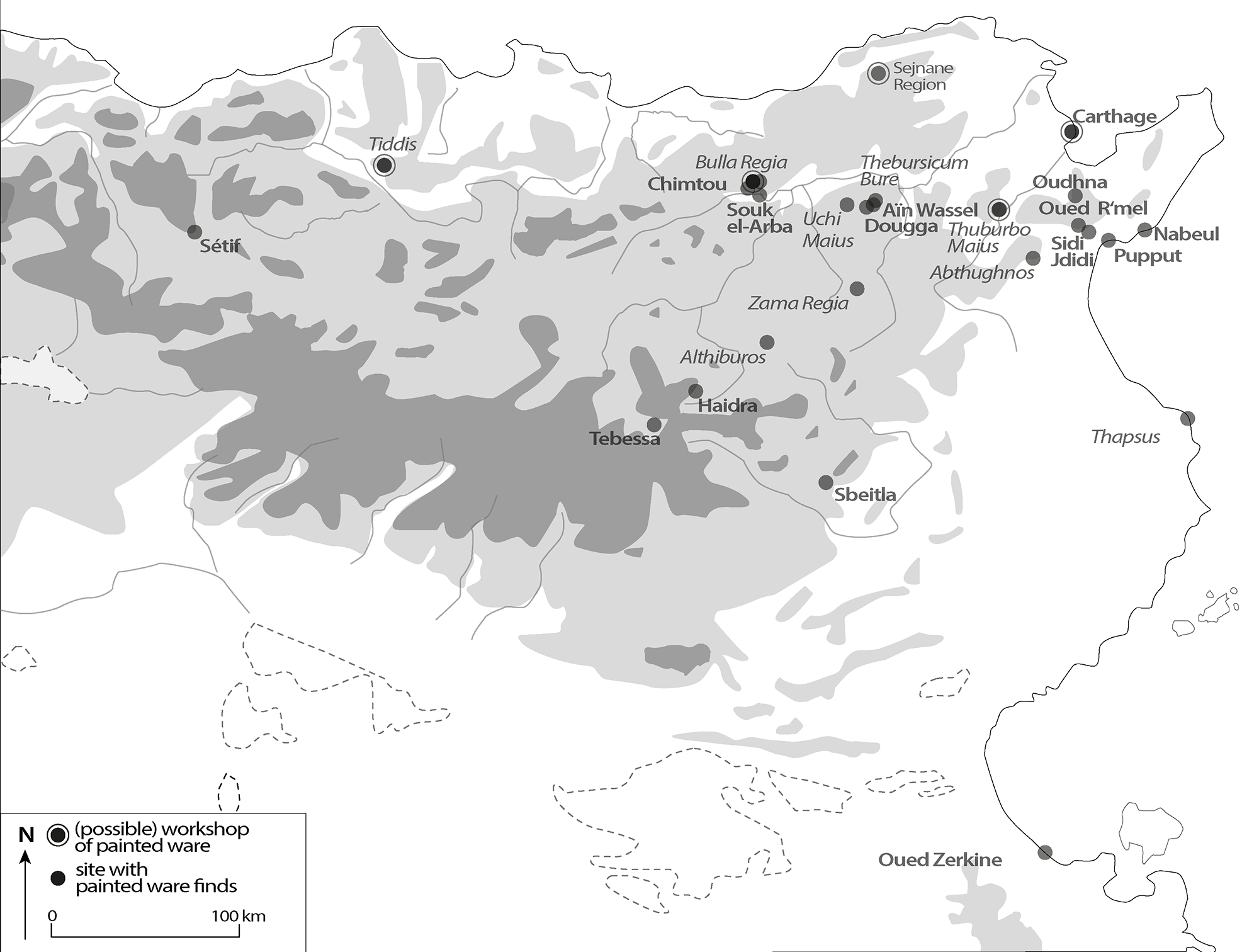
Figure 2. Distribution map with published Late Antique African Painted Ware (APW) sites and possible workshops (HM).
Table 1. Sites with published APW (CF, HM)
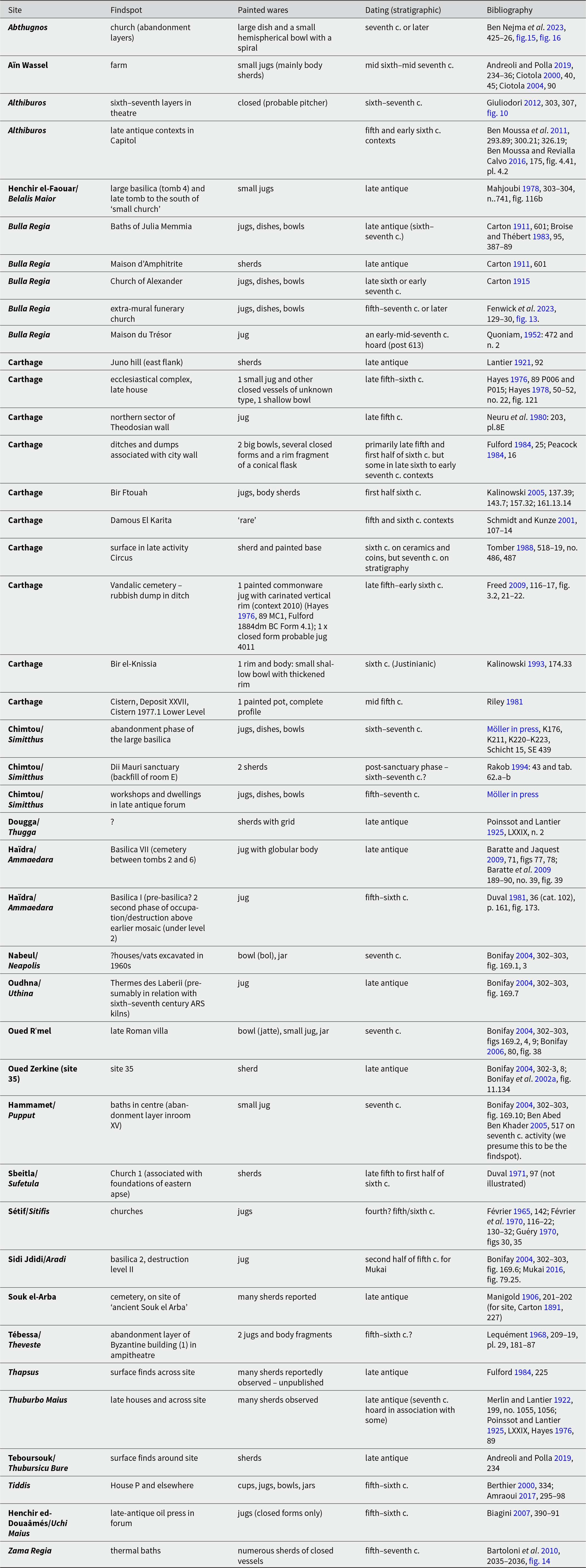
At Carthage, painted wares appear particularly in rubbish deposits of the late fifth and first half of the sixth centuries (Fulford Reference Fulford, Fulford and Peacock1984, 228; Hayes Reference Hayes and Humphrey1976, 89). Painted wares of ‘local’ fabric were found in a late fifth-century deposit in the northern sector of the Theodosian wall (Neuru et al. Reference Neuru, Kyle, Demers and Hayes1980, 203, pl.8E) and in a drain fill deposit dated 425–60 nearby (site 90; Lund Reference Lund, Poulsen and Humphrey2020). Closed vessels with a similar fabric have been identified in various church contexts, including the ‘ecclesiastical complex’ (Hayes Reference Hayes and Humphrey1976, 89), Bir el Knissia (Kalinowski Reference Kalinowski and Stevens1993, 173–74), the large extra-mural pilgrimage complex Bir Ftouha (Kalinowski Reference Kalinowski, Stevens, Kalinowski and Van der Leest2005, 157.32; 161.13. and 14), and Damous el Karita (Schmidt and Kunze Reference Schmidt, Kunze and Dolenz2001, 107–114). At Bir Ftouha, one sherd is made of buff orange coarse fabric and differs in fabric and decoration from other APW in Carthage (Kalinowski Reference Kalinowski, Stevens, Kalinowski and Van der Leest2005, 161.14). In the cisterns, a well-preserved sherd was found at one of the cisterns in the lower levels (Riley Reference Riley and Humphrey1981, 97, figure 3.56). However, there are also later examples, including a shallow bowl post-dating the mid-sixth century which was found in a fill overlying latest floor levels in a house (Humphrey Reference Humphrey1978, 157.P006, P015), and a closed vessel with ribbed handle which was found in a late sixth- to early seventh-century context near the city walls (Fulford Reference Fulford, Fulford and Peacock1984, 227.5).
APW is also found at major coastal and inland towns in north-eastern Tunisia, including Nabeul, Sidi Jdidi and Pupput. The ceramics from Sidi Jdidi were found in a destruction/abandonment layer in Basilica 2 (‘Groupe Épiscopale’) dated to the second half of the fifth century (Bonifay Reference Bonifay2004, 303; Mukai Reference Mukai2016, 122, context, 81, fig. 79.25). Inland, painted wares were found during the excavations of the Laberii thermal baths in Oudhna (Bonifay Reference Bonifay2004, 302.7), which are presumably contemporary with sixth to seventh-century kilns producing ARS and commonwares in the baths. At Thuburbo Maius, painted jugs and a bowl were noted in ‘late houses’ below the Capitol (Poinssot and Lantier Reference Poinssot and Lantier1925, LXXIX – a late antique ceramic kiln has been identified (Ben Abed and Bonifay Reference Ben Abed and Bonifay1998, 231, n. 1). The discovery of painted wares in the late antique villa of Oued Rʿmel suggests a wide diffusion in rural sites (Bonifay Reference Bonifay and Ghalia2006, 80, fig. 38); it is unclear whether the Segermes survey found any painted wares as only the finewares were published. At Nabeul, Pupput and Oued Rʿmel, the ceramics seem to continue into the seventh century.
In the Medjerda Valley, large assemblages of painted wares have been found at both Bulla Regia and Chimtou, where painted wares have been noted extensively in sixth- and seventh-century layers (see above). Carton also identified many painted sherds at a cemetery on the site of a settlement he identified as ‘ancient Souk-el-Arba’ (i.e. a small Roman settlement on the site of modern Jendouba), (Manigold Reference Manigold1906, 201–202). At Belalis Maior, painted jugs were found in a tomb in the large church as well as a late tomb near the ‘small’ church (Mahjoubi Reference Mahjoubi1978, 303–304, n. 741, fig. 116b).
In the High Tell, painted wares have been found at multiple urban sites. In the hinterland of Dougga, a variety of small jugs (mainly bodysherds) were found in the Byzantine farm of Aïn Wassel (Ciotola Reference Ciotola and de Vos2000, 45, 49; Andreoli and Polla Reference Andreoli, Polla, Raaijmakers and Maurina2019, 234–236). The jugs had a hard, well-purified fabric with small, white, beige-brownish inclusions, which is distinct from the local fabrics of other common-wares and coarse-wares. In nearby Uchi Maius, painted ware jugs were found with other finds from the fifth and sixth centuries associated with late antique oil presses in the forum (Biagini Reference Biagini and Vismara2007, 390–391). The clay paste is described as light beige or orange in colour with white and less commonly red inclusions, similar to that of nearby Aïn Wassel. Limited surface finds of painted ware (no typology given) were also noted around Thubursicu Bure (Andreoli and Polla Reference Andreoli, Polla, Raaijmakers and Maurina2019: 234). Numerous sherds of closed vessels were found in the thermal baths in Zama Regia (Bartoloni et al. Reference Bartoloni, Ferjaoui, Ben Nejma, Guirguis, Mallica, Pompianu, Seba’i, Touihri, Unali, Milanese, Ruggeri and Vismara2010, 2035–2036, fig. 14) and a Byzantine church in Abthugnos, where a large dish and a small hemispherical bowl with a spiral decoration were found in abandonment layers dated to the late seventh century or a little later (Ben Nejma et al. Reference Ben Nejma, Torchani, Touihri and Marbet2023, 425–26). At Althiburos, closed vessel fragments were found in sixth to seventh-century contexts in the Theatre (Giuliodori Reference Giuliodori2012, 303, 307, Figure 10) and the Capitol area where a date of the early sixth century is postulated (Ben Moussa et al. Reference Ben Moussa, Torres, Revilla, Sanmartí, Telmini, Touihri, Ben Jarbania, Ben Tahar, Kallala and Sanmartí2011, 293.89; 300.21; 326.19, 178.US26015/26050; 179.US26054).
The High Steppes are more obscure, despite extensive excavations of late-antique churches in this area. Painted ‘Christian’ sherds (red on a beige background) were found at Sbeïtla in Church 1 (Bellator) in association with the foundations of the earliest eastern apse which is dated to the late fifth/early sixth century (Duval Reference Duval1971, 97). At Haïdra, two complete jugs have been published, one in the cemetery associated with Basilica VII and a second in a destruction layer which may predate the construction of Basilica I. Across the border in modern Algeria, painted wares with orange-red to ochre fabrics were noted at Tébessa in Vandal-Byzantine accumulation layers covering an abandoned house (Habitat 1) built in the amphitheatre and associated with late fifth- and early sixth-century coins (Lequément Reference Lequément1968).
In central and southern coastal Tunisia, the picture is very different. There are almost no recorded painted wares, even in those coastal sites which have been comprehensively studied and published. Painted ware was apparently noted at Thapsus on a visit by Fulford in the 1980s (Fulford Reference Fulford, Fulford and Peacock1984, 225), but no sherds have been identified in subsequent surveys or publications of the ceramics (Slim et al. Reference Slim, Trousset, Paskoff and Oueslati2004, 152–53; Younes Reference Younes1999; Sghaïer et al. Reference Sghaïer, Bonifay, Touihri and Gourar2023). No painted wares have been identified in the comprehensive survey in and round nearby port-city Salakta (Nacef Reference Nacef2015, 61–76) or at the comprehensive studies of late antique commonwares from excavations at Leptiminus (Ben Lazreg and Mattingly Reference Ben Lazreg and Mattingly1992; Stone et al. Reference Stone, Mattingly and Ben Lazreg2011), Rougga (Guéry and Bonifay Reference Guéry, Bonifay, Euzennat and Slim2020, 97–106) or further south in the excavations of Meninx on Jerba (Ritter and Ben Tahar Reference Ritter and Tahar2022; Fentress et al. Reference Fentress, Drine and Holod2009). The most southerly find is a body sherd of a closed vessel at a rural agglomeration in the Oued Zerkine (Site 35), the only painted ware noted in the Tunisian Coastal Survey (Slim et al. Reference Slim, Trousset, Paskoff and Oueslati2004, 109–110; Bonifay et al. Reference Bonifay, Capelli, Martin, Picon and Vallauri2002a, 152, no. 134).
Further west in modern Algeria, painted ware has been identified at two inland sites. A large assemblage of painted wares (including jugs, jars and small bowls) was found at Tiddis, particularly in a mosaic-floored room of the so-called ‘House P’ (Berthier Reference Berthier2000). The sherds have a fine, dense reddish-brown to yellowish paste with white, irregularly applied slip and red painted decoration. The concentration of painted ware sherds and wasters in the same fabric in the vicinity of the pottery kilns suggests that the vessels were produced locally, though no painted wasters were found (Berthier Reference Berthier2000, 334). Painted wares with a fine, hard, brick-red and reddish fabric with white inclusions were noted in the excavations of churches at Sétif (Février Reference Février1965; Février et al. Reference Février, Gaspary and Guéry1970; Guéry Reference Guéry, Février and Gaspary1970). The painted wares of Sétif (basilica) and Tébessa (amphitheatre) are dated broadly to the fifth–sixth century; the ceramics from Tiddis are assumed to be contemporary, based on typological features (Amraoui Reference Amraoui2017, 295–98).
Three conclusions may be drawn from this overview of the data. First, though there are significant gaps in our knowledge particularly in eastern Algeria and central Tunisia, the distribution of painted wares seems to focus on northern Tunisia and the inland regions of Algeria. It is striking, however, that APW has not yet been identified in published assemblages of fifth to seventh-century commonwares from major coastal towns (Leptiminus, Thapsus, Meninx) and it seems that painted wares may not have diffused far south.
Second, APW are found in a wide diversity of fifth–seventh-century contexts. Closed forms (jugs and jars) are more commonly noted in the literature than open forms. Reflecting the urban bias of scholarship, most of our finds come from urban sites that were thriving in late antiquity. These urban sites, however, range significantly in size and importance from the metropolis of Carthage to substantial large coastal and inland cities, as well as much smaller towns (e.g. Zama Regia, Althiburos, Abthugnos). Significantly, the two farms that have been excavated (as well as the rural ‘bourg’ on the site of modern Jendouba) show that this ware was widely dispersed into the countryside. APW is found primarily in residential/workshop contexts and churches (including occasionally in association with graves). At Carthage, the presence of painted ware in dumps in the ditches in and around the Theodosian wall, mixed in with household refuse, shows that these ceramics were being consumed and dumped regularly.
Finally, the chronology of APW still requires refinement. Scholars broadly agree that they date to the fifth–seventh centuries, but due to a lack of well-stratified published contexts, their introduction and end date remain to be determined. Our earliest examples come from Carthage and the coast. At Carthage, APW appears mainly in the levels of the late fifth and early sixth century (Hayes Reference Hayes and Humphrey1976: 89; Fulford Reference Fulford, Fulford and Peacock1984, 228; Kalinowski Reference Kalinowski and Stevens1993), with its first appearance in several mid–late fifth-century deposits (Neuru et al. Reference Neuru, Kyle, Demers and Hayes1980; Lund Reference Lund, Poulsen and Humphrey2020). The second half of the fifth century is also proposed for Sidi Jdidi where APW were found in the second destruction level of Basilica 2 (Bonifay Reference Bonifay2004: 303). A mid to late fifth-century introduction in, and around, Carthage is given further weight by the complete absence of APW at Utica, which seems to be abandoned in the early fifth century (Fentress pers. comm). Fulford (Reference Fulford, Fulford and Peacock1984, 228) suggested that the main period of painted wares at Carthage was 475–550, with the majority being produced between ca. 500–535, and proposed that later examples are residual. He also suggested that those with ‘confused’ patterns are later than those with distinct motifs of birds, lattice and leaves. To Bonifay, APW in seventh-century contexts at Carthage, Nabeul, Pupput and Oued Rʿmel seemed to be too numerous to be residual (Bonifay Reference Bonifay2004, 303).
Continuity of production beyond the sixth century can now be confirmed, especially outside Carthage. A later dating is also suggested by the farmhouse of Aïn Wassel where APW was found together with ARS produced in the mid-sixth–mid-seventh century in both the occupation and abandonment layers of two rooms (Andreoli and Polla Reference Andreoli, Polla, Raaijmakers and Maurina2019). At Chimtou, a few fragments of painted wares in the abandonment phase of the large basilica are associated with late ARS Hayes 99B of probably regional production and ARS D Hayes 109, which could possibly indicate a production into the seventh century (Möller Reference Möllerin press, Schicht 15, SE 439). In Bulla Regia, the early seventh-century hoard (post-613) of 70 gold solidi in a small painted jar in the Maison du Tresor confirms that the ceramics were still in use in the seventh century (Quoniam, Reference Quoniam1952, 472 and n. 2). The painted wares of the ‘Church of Alexander’ associated with amphorae of type Hammamet III might also suggest a later date (Baratte Reference Baratte, Rocca, Piraud-Fournet and Baratte2022). Unfortunately, the painted vessels in both Chimtou and Bulla Regia, with the exception of the jar with the hoard, are all found in contexts together with pottery from the late sixth century. Our poor understanding of early medieval ceramics before the introduction of glazed ceramics in the late ninth century hinders consideration of the ‘end-date’ of these wares, but the frequent presence of APW in very late abandonment/destruction contexts (e.g. church at Abthugnos, funerary church at Bulla Regia, baths at Pupput) suggests that there is a strong likelihood that the wares continued to be produced even into the late seventh and probably eighth centuries.
Painted wares: typology and decoration
Earlier attempts to classify the typology of painted wares were stymied by the poor preservation of painted wares, in particular, the challenge of identifying rims, bases and handles which were usually undecorated. The excellent state of preservation and comparatively large assemblages of APW at Bulla Regia and Chimtou, particularly the well-preserved jars in the reserves of Bulla Regia which are presumably those from Carton’s (Reference Carton1915) excavations, have permitted a typology to be created. Table 2 provides a summary of all known APW types, integrating other published examples for comparison. The ceramics are buff in colour and have a very thin lighter surface layer, probably a so-called ‘self-slip’ layer obtained by wetting the surface of the formed ceramic object while the clay is still moist to produce a smoother finish (Quinn Reference Quinn2022, 255). Brownish-black and reddish-brown paint is used for details (see below on its composition). The typological variability of painted wares in Chimtou and Bulla Regia is very limited. The forms are restricted to small and large closed vessels (one-handled jugs and table amphorae) and a few open vessel forms (small bowls and plates/bowls of large diameter). In general, all types occur on both sites. A few exceptions such as APW 2 and 3 which only appear at Bulla Regia may reflect the better state of preservation of vessels at the site.
Table 2. Summary of APW typology and identified examples (HM)
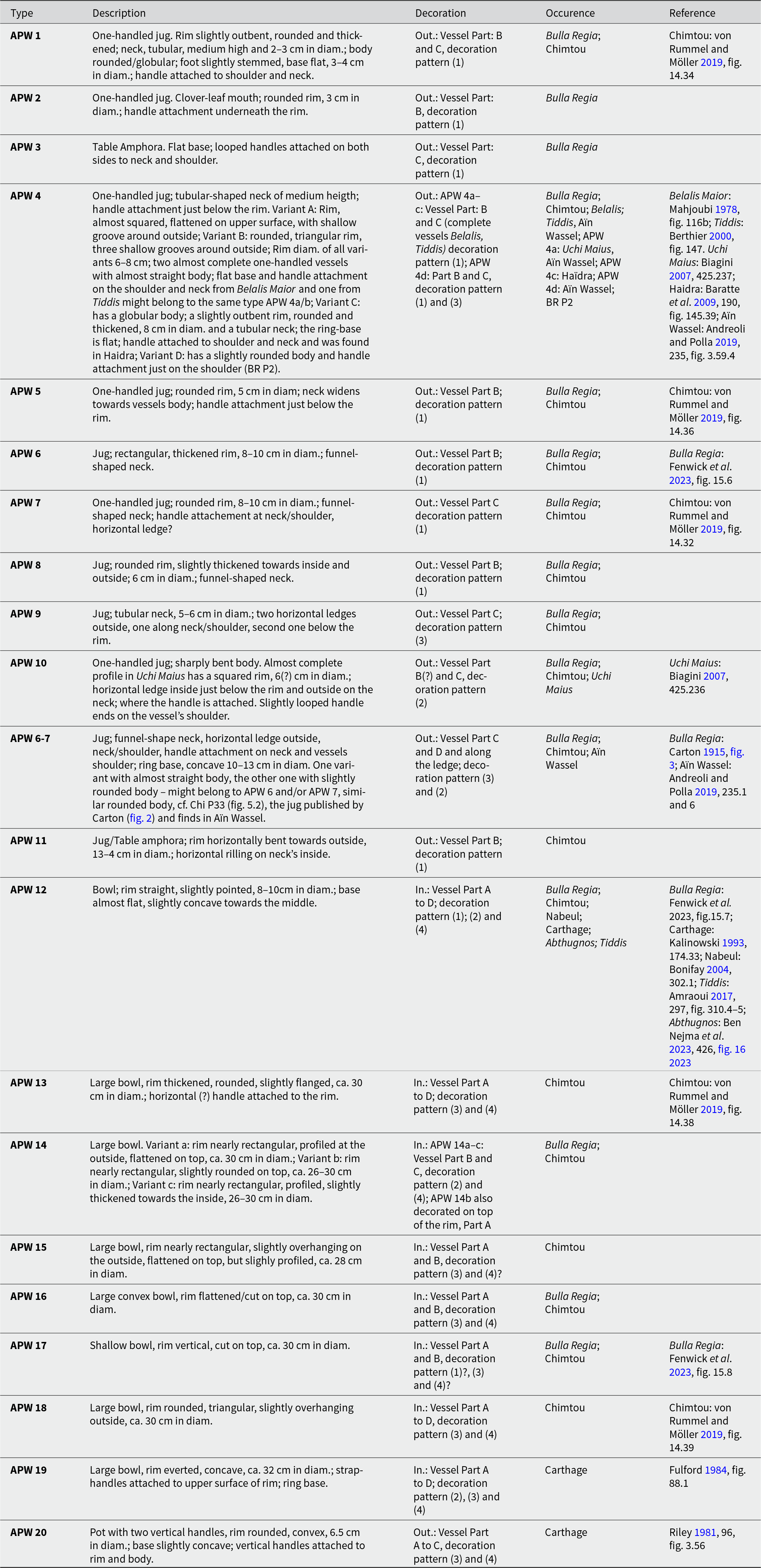
Closed vessels ( Figure 3)
Smaller examples of one-handled jugs (APW 1 and APW 2), can occur with round or cloverleaf mouths and have an average rim diameter of 2–3 cm. A table amphora (APW 3) is similarly small. Larger vessels are more common and vary typologically. Particularly common are variants of one-handled jugs with a tubular neck and thickened rim (APW 4a–d). The rim diameter is usually between 6–8 cm. Two completely preserved vessels from Tiddis (Berthier Reference Berthier2000, fig. 147) and Belalis Maior (Mahjoubi Reference Mahjoubi1978, fig. 116b) with an almost straight body, flat (?) base and one handle attached to neck and shoulder have a similar rim as seen in type APW 4a/b. Another almost completely preserved vessel with the same rim shape, but with a round rather than a straight body was found in Haïdra (APW 4c, Baratte et al. Reference Baratte, Fourmond, Jaquest and Baratte2009, 90, fig. 145.39, not shown in Figure 3). A further variant APW 4d has a slightly rounded body. It is possible that some rim fragments summarised under APW 4a and b might also end in body types APW 4c and d. One example of a one-handled jug, APW 5, has a neck that widens towards the vessel’s body.
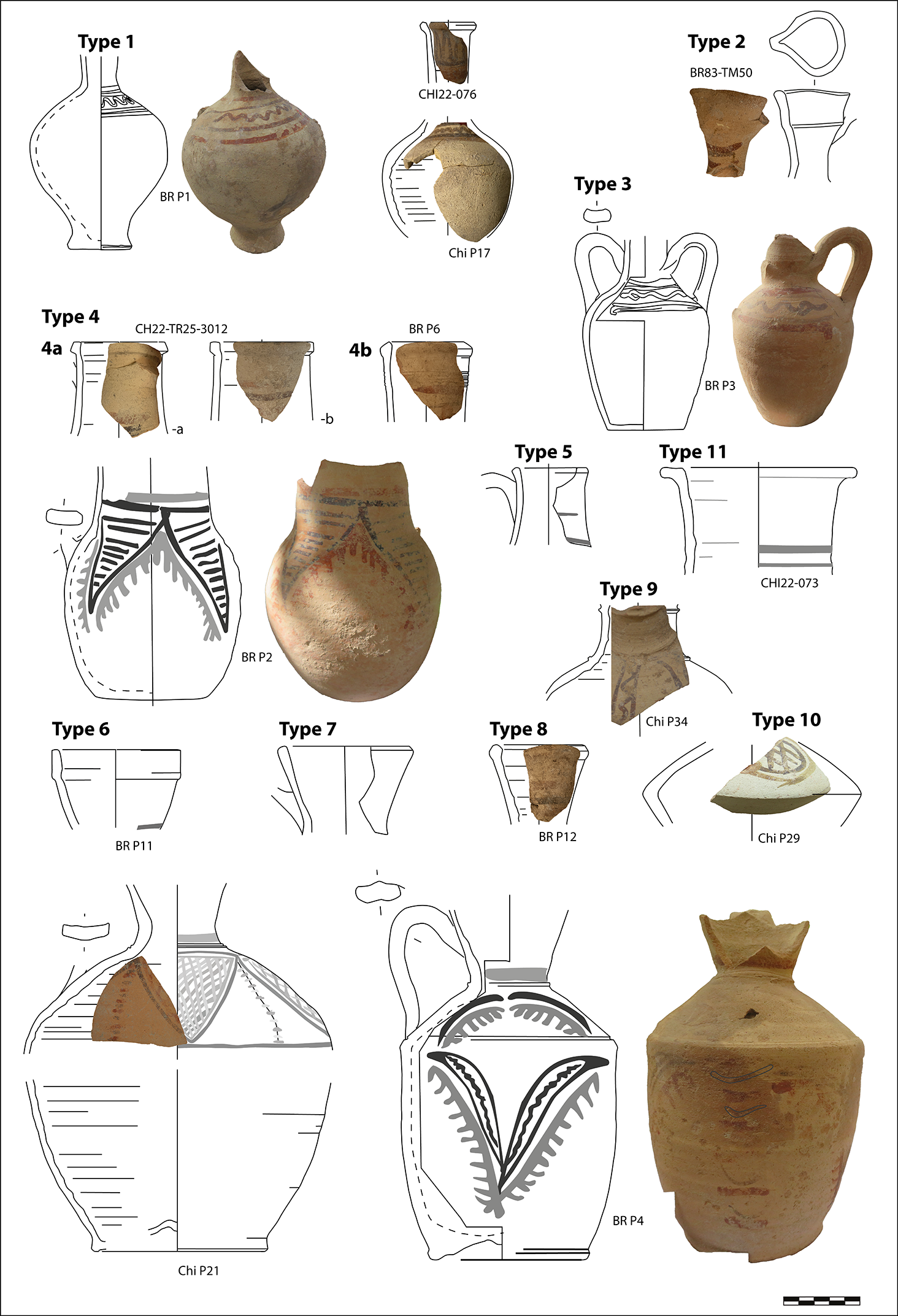
Figure 3. Typology of APW - closed forms (APW 4c see: Baratte et al Reference Baratte, Fourmond, Jaquest and Baratte2009, 190, figure 145.39 (HM)).
Funnel-shaped samples (APW 6–8) are just as common as those with a tubular neck (APW 4) and are differentiated into three main types by their rims. The funnel-shaped neck of an almost complete vessel (BR P4) probably shows the complete shape of one of types APW 6–7, as does Chi P21 (both Figure 3) and the jug published by Carton (Reference Carton1915, fig. 3), as well as the vessels found in Aïn Wassel (Table 2). They all have in common a horizontal ledge on the outside; however, the transition from shoulder to body can also be smoothed/rounded (APW 6–7). A similar ledge can be seen by a jug (APW 9) without a preserved rim. A one-handled jar with northern Tunisian fabric from the Musée des beaux-arts de Montréal, thought to have been purchased in Carthage (Caron Reference Caron2021), is similar to APW 6–7, but has to be treated with care as its origin is uncertain. An almost complete one-handled jug published from Uchi Maius (APW 10, Table 2) has the same sharp, bent body visible on the body sherds from Chimtou. The rim of APW 11 is folded horizontally outwards. The vessel is thicker-walled than the other types and traces of the production process (wheel-turning lines) are clearly visible (CHI22-073, not sampled).
Open vessels ( Figure 4)
Bowls with a small diameter (APW 12) are widely known and found at several sites (Figure 15). The large bowls are more variable in their typology. Unique is an example of a large bowl with the handle attached to the rim (APW 13, cf. Table 2.) which may be related to type APW 18 with triangular, slightly overhanging rim. APW 19, a large bowl with everted, concave rim that has strap-handles to the upper surface of the rim, found in Carthage with at least one more piece of the same type, does not currently have any parallel in the Bulla Regia or Chimtou wares. More common are bowls APW 14a–c with a compact, nearly rectangular rim that occurs in three different variations. Bowl APW 15 is closely related. A bigger group of large bowls are summarised under AWP 16. The group itself is not as homogeneous as the other open vessel types (e.g. APW 12, APW 14). APW 17 is slightly different but also related to APW 16 because of a similar rim-treatment. Up to now only one type of base can be attributed to the large bowls. It has a ring base and is typically 12cm in diameter (Chi P7, Figure 6a).
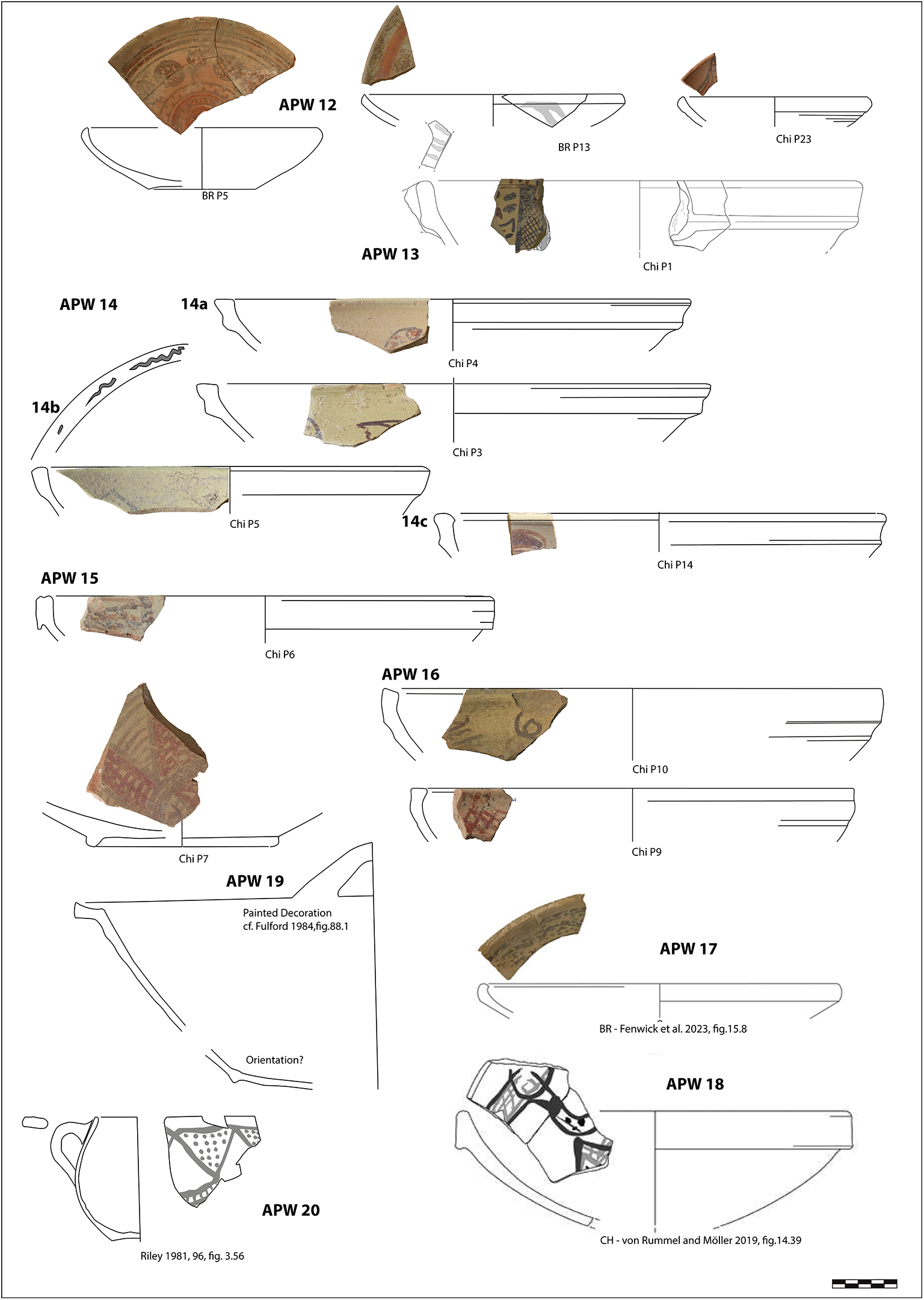
Figure 4. Typology of APW - open forms (HM).
The complete profile of a pot found in Carthage is summarised under APW 20. Similar pots have not been identified in Chimtou nor in Bulla Regia – these may be a coastal production as similar pots are also mentioned in Nabeul and Oued Rʿmel (Bonifay Reference Bonifay2004, fig. 169.3–4).
Decoration patterns
Four categories of decoration can be identified (Figure 5): (1) horizontal lines and wavy bands; (2) faunal (birds and fish) and floral patterns; (3) grids (criss-cross and parallel lines), often framed by triangular patterns. However, they can also be used as filling pattern for the bird wings (cf. Figure 5: Chi P33); (4) irregularly placed strokes and dots. Vertical lines partially interrupted by horizontal strokes or wavy bands abutted by lines are used as dividing lines/filling motifs (e.g. Figure 5: BR P4; Chi P21) for different zones. Vertical lines from which short, diagonal strokes emanate can also be selected as dividing lines or filling motifs (Figure 5: BR P4; BR P2).
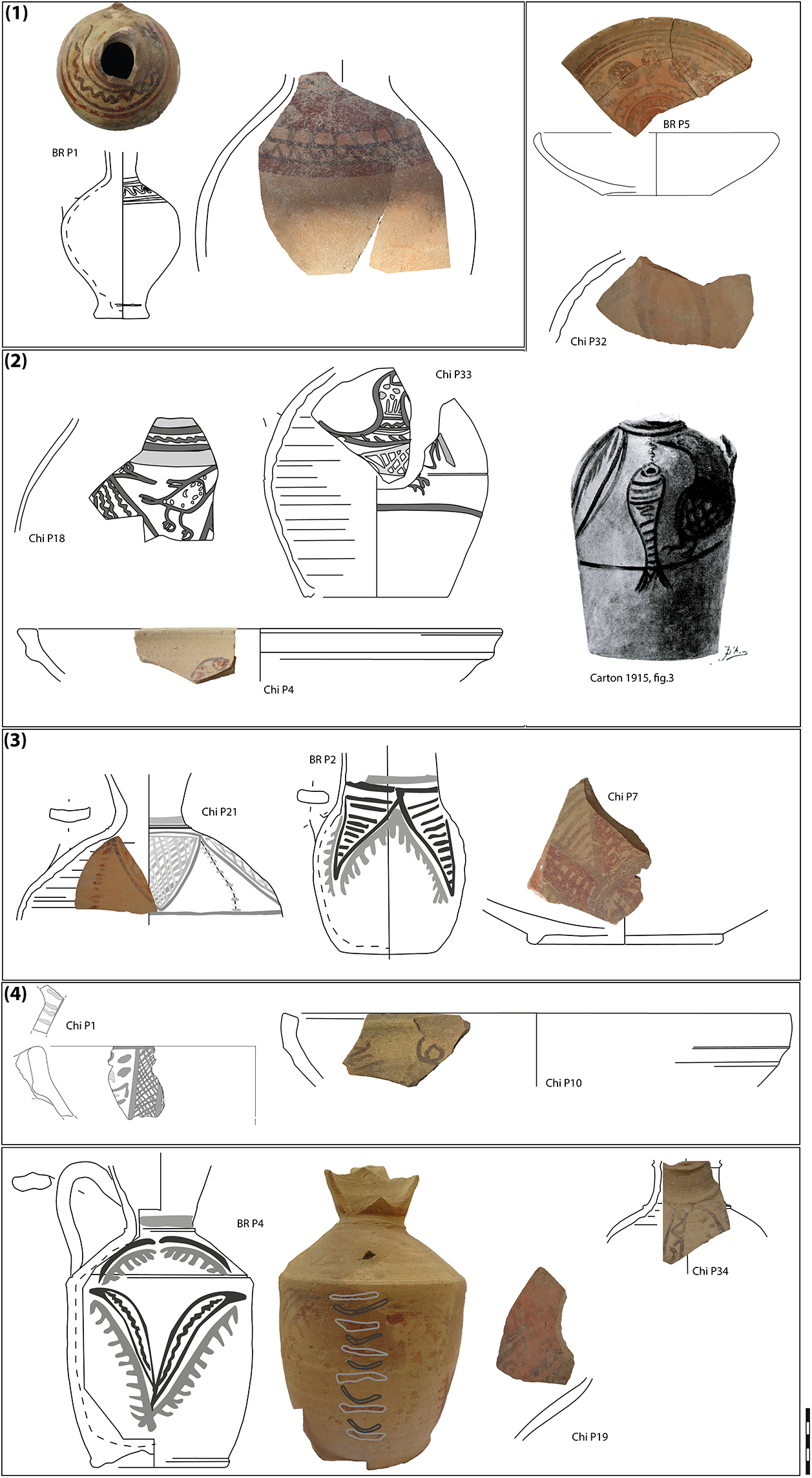
Figure 5. Decoration patterns (DP) of APW (HM).
The jug showing a Chi-Rho, two cockerels and possible architecture (a basilica) from the Musée des beaux-arts de Montréal has not been considered here (Caron Reference Caron2021, fig. 4). The painted decoration has no parallels in published APW; in our opinion the jug’s Tunisian provenance is uncertain.
The nature of decoration on the open and closed vessels differs significantly. On closed vessels (jugs and juglets), there is usually a strict order for the zones of decoration. The closed vessels found in Chimtou and Bulla Regia are divided into zones (A–D); each zone is separated by horizontal lines (zone A: rim; zone B: neck/shoulder; zone C: body; zone D: body/bottom) (see Table 2). If there is a handle, the decoration runs out in the area of that zone (Figure 5: BR P1). In rare cases, the zones are orientated along the vessel profile (along ridges, edges, see Figure 5: Chi P21; BR P4). On closed vessels, painted decoration is always present in zone B, frequently present in zone C and sometimes present in zone A. Zone D is always left blank (but can be painted on the open vessels).
The most common decorative patterns on closed vessels are horizontal lines alternating in colour or monochrome lines and wavy bands (1), whereby a wavy band is framed by a horizontal line in the same colour (Figure 5: BR P1; Chi P34; BR P19). The height and density of the waves can vary greatly. These patterns occur mainly in Zone B, but they exist also in Zone A (Figure 3: BR P12; BR P6; CHI22-073) - a wavy band alone without a border of lines can occur in Zone A, but so far this has only been observed on the open vessels on top of the rim (Figure 4: Chi P5). Floral and fauna motifs (2) are found only in Zone C of the closed vessels, delimited by a horizontal line above and below(Figure 5: Carton Reference Carton1915, Figure 3; Chi P33). The most common motif is abstract birds in profile: wavy bands, dots, grids, lines and short strokes are used to define their figure. There are often dividing lines between the birds (Figure 5: Chi P18; Carton Reference Carton1915, Figure 3). Leaf motifs drawn with thick strokes are also characteristic. The leaves are ‘hung’ in a row on the horizontal line that introduces the zone (Figure 5: Chi P32, Carton Reference Carton1915, Figure 3). Roses can also be noted on some examples (Figure 5: BR P5). The grid patterns (3) are usually arranged in the same style. They are found in Zones B and C, often integrated into triangles that point downwards framed by lines with short vertical strokes (Figure 4: Chi P21; BR P2).
In contrast to the closed vessels, large plates/bowls are filled with decoration in all zones. However, the decoration can be set selectively, so that many blank spaces are created (Figure 4: Chi P5; Figure 5: Chi P10). Geometric patterns (lines, wavy bands, grid lines) dominate. Floral or faunal decorations have only occasionally been identified (Figure 5: Chi P4 (bird); Figure 4: APW 18 (animal?), but this may reflect poor preservation. The selection of motifs/decoration patterns seems less ordered except for decoration pattern 3: grids are organised around the centre of some open vessels in a similar manner to closed vessels (Figure 5: BR P2; Chi P21 and Chi P7). For small bowls/plates, it is sometimes possible to identify different zones of decoration. Zone A is filled by one broad line just underneath the rim part of the vessel (Figure 4: BR P13) or concentrical lines alternating in colour. The latter is followed by a broad band, showing alternating circles and faunal motifs, which are filled with dots and grid patterns (Zone B). The vessel’s centre is marked by a large dot, which is encircled by lines filled with dots of different colours (Zone C) (Figure 5: BR P5). It remains unclear whether this is a typical decoration of these small bowls (Figure 4: APW 12) in the region, as we have found no further examples in Bulla Regia or Chimtou. Similar APW 12 found in Nabeul and Oued R ʿ mel shows different decoration , including a spiral painted on the interior of the vessel (cf. Figure 16).
Archaeometric analyses
The samples and sampling strategy
Fifty-seven ceramic artefacts representing the different types and decoration designs identified in the painted ceramics excavated at Chimtou and Bulla Regia were selected for analysis (Table S2 in supplementary material; Figures 6, 7). Since the ‘local fingerprint’ for ceramic production in Bulla Regia or Chimtou has yet to be established in the absence of kilns, 16 architectural tubuli and five large storage jars from the same stratigraphic phases as the painted wares were also analysed on the assumption that they were produced locally due to the high quantity/mass production (tubuli) and the size and weight (storage jars, cf. Bonifay Reference Bonifay and Lavan2013, 539) (Figure 8). One modern sherd manufactured by a local potter in Bulla Regia has also been included in the analysis for comparison. They are intended to serve as an additional parameter for determining origin.
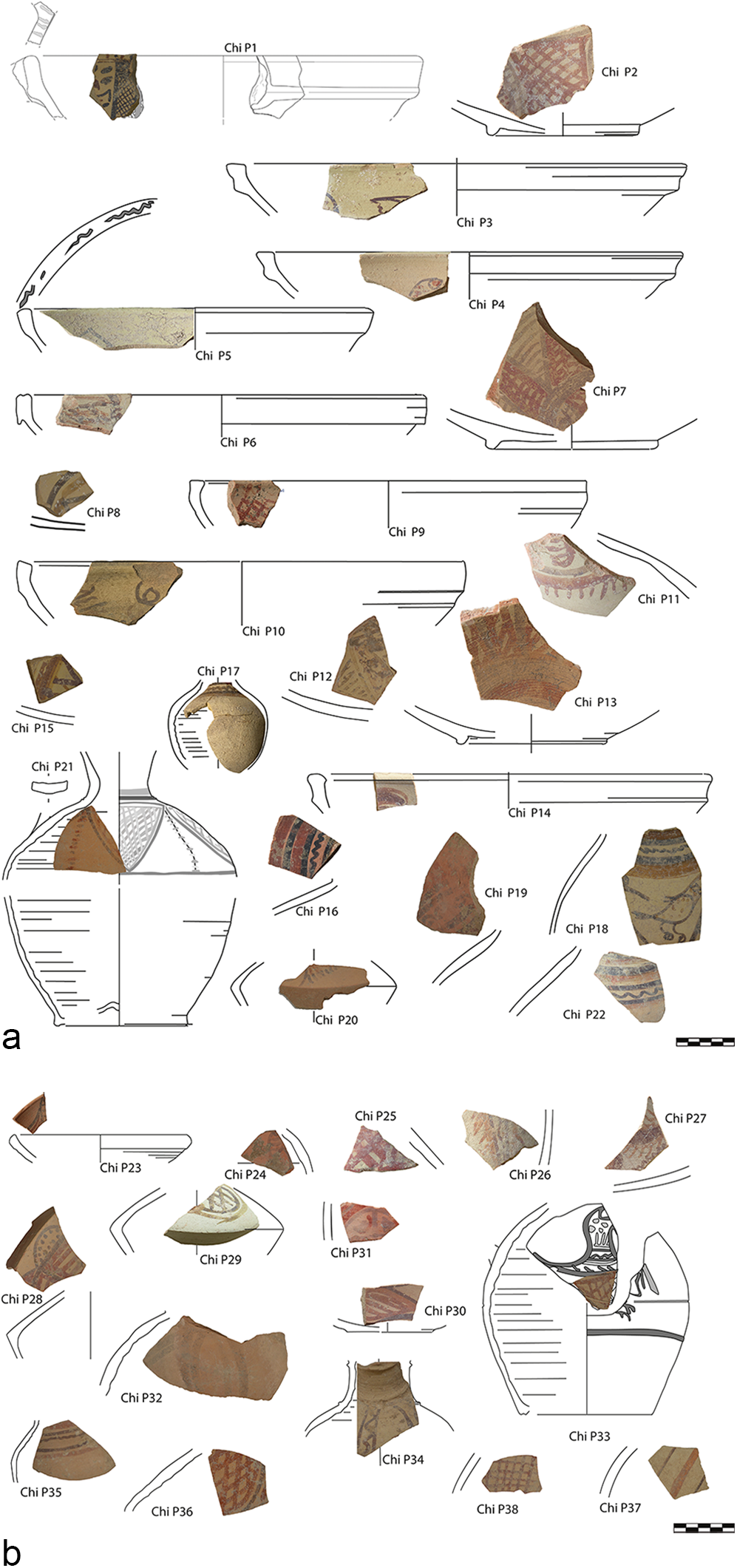
Figure 6. a and b: Chimtou - all analysed samples (Chi P) (HM; VO).
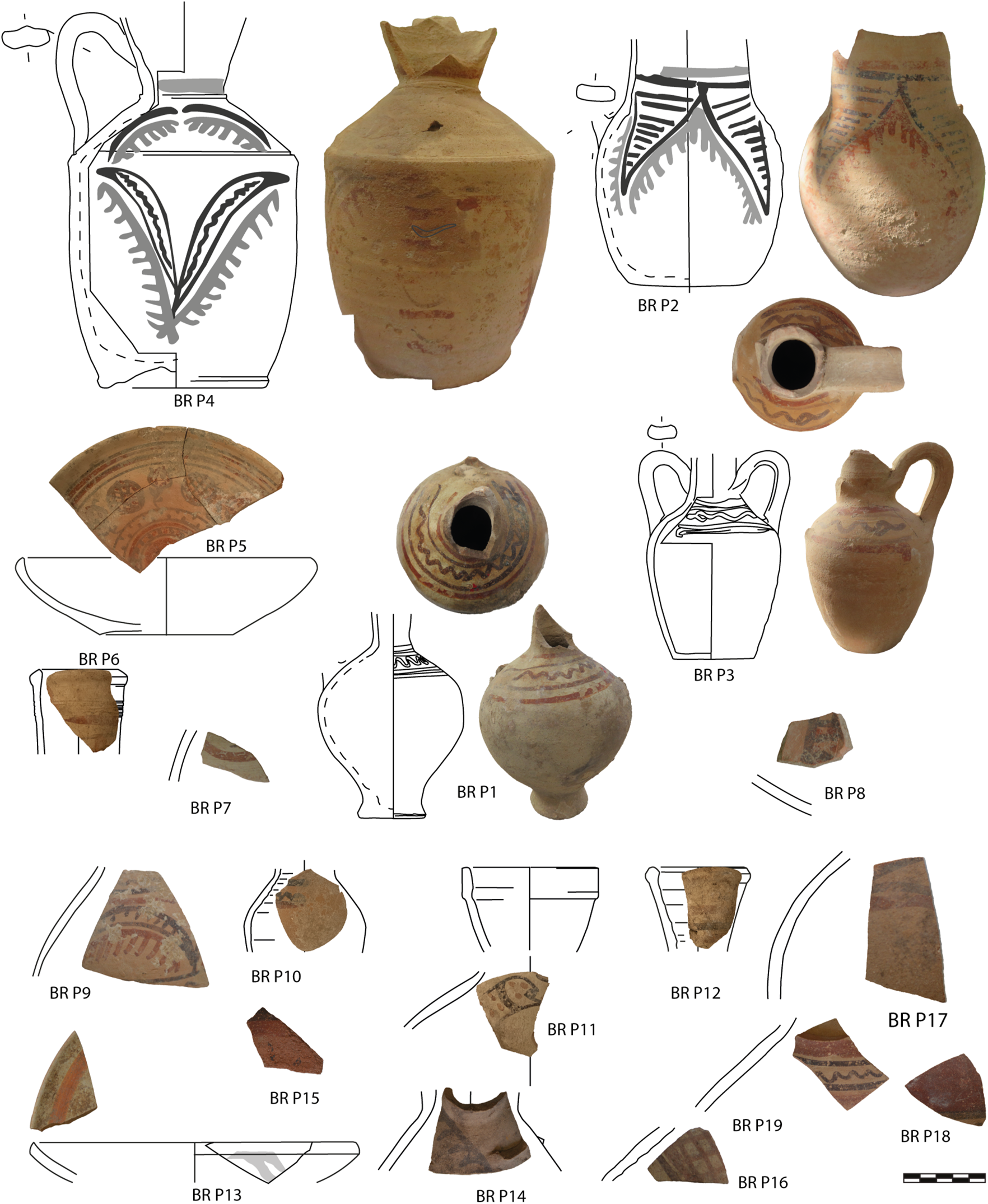
Figure 7. Bulla Regia - all analysed samples (BR P) (HM; VO).
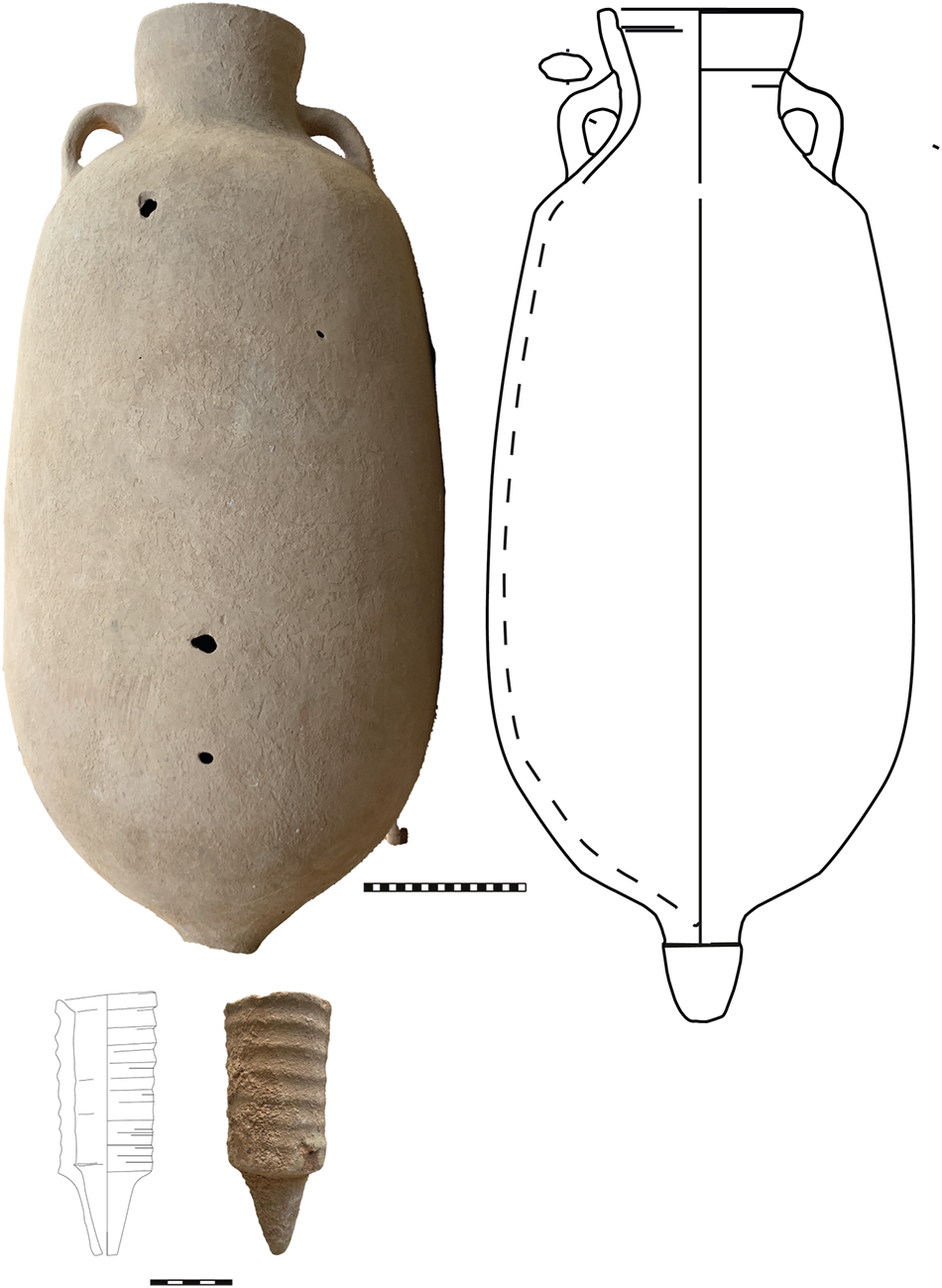
Figure 8. One of the storage jars and tubuli sampled (HM).
Methods
Methods employed for compositional analyses are summarised below; see supplementary material for further details.Footnote 3 The samples were first analysed using thin-section petrography to examine the composition and the textural characteristics of the body pastes. The storage jars and the modern sample were not analysed in thin section, as the samples were very small.
The sherds were also characterised geochemically by LA-ICP-MS using an Applied Spectra J200 Tandem LA/LIBS system coupled to an Agilent 7900 quadrupole ICP-MS (See Table S1 in supplementary material for information on the instrument parameters and Table S2 in supplementary material for LA-ICP-MS results). Four samples (BR P1–4) were too small after thin sectioning to be analysed by LA-ICP-MS. Three SRMs were used for calibration: NIST 610, 614 and NIST 679. Accuracy and precision were measured on NIST 612 and are reported in supplementary information (Table S3 in supplementary material). A sub-sample of 23 sherds was analysed by Raman spectroscopy to identify the pigments used for the painted decoration. Samples were selected to include all decorative patterns and their different hues. Samples were analysed using a Renishaw inVia Qontor confocal Raman microscope. The accuracy and stability of the wavenumber were checked by recording the Raman spectra of a silicon standard (520 cm-1). The dark-brown decoration of a sub-selection of three samples was analysed by portable X-ray fluorescence spectrometry to confirm the results obtained by Raman for the dark-brown pigment, using an Olympus Innox-X Delta Premium hand-held portable X-ray fluorescence spectrometer (‘UCL IoA pXRF4′) with a Rhodium source and a 2 mm aluminium filter. Compositional groups have been established using multivariate statistical methods including principal component analysis (PCA) and hierarchical cluster analysis (HCA), the latter using the average linkage method. Prior to statistical analysis, data were transformed to log-ratio values as a resolution of the constant-sum constraint (Aitchison Reference Aitchison1986).
Geological prospection
In order to test whether the painted wares from Chimtou and Bulla Regia were manufactured locally, raw clay samples were collected at locations near the sites and investigated both chemically and petrographically. The Central Medjerda Valley is a tectonic depression that is delimited by the Kroumir Mountains in the north and the Dorsal Mountains in the south. The geology of the area around Chimtou is dominated by alluvial deposits and bounded by Pontian to Quaternary sediments to the north and south, composed predominantly by mudstone, marl, sandstones and conglomerates, while Triassic formations composed of shale and sandstone have been reported north-east of the site. The geological formations around Bulla Regia are similarly characterised by alluvium deposits constituted of silt, sand and marl, as well as by Eocene limestone (Ayed-Khaled et al. Reference Ayed-Khaled, Zouaghi, Atawa and Ghanmi2015).
Using geological maps and information provided by local potters, attempts were made to sample naturally occurring raw materials which might have been used as clay sources in antiquity. The suitability of the clay for the manufacture of ceramics was tested by handling and manipulating a clay deposit when moist (Quinn Reference Quinn2022,187). Five clay samples were collected around the site of Chimtou and nine around the site of Bulla Regia (Figure 9). These clays formed in different geological formations and are exploited today by local potters for the manufacture of both cooking and decorative pottery. Additional clay samples were taken from Sejnane as Peacock (Reference Peacock, Fulford and Peacock1984) suggested that clay from this region might have been used for the manufacture of painted wares excavated in Carthage. The samples were kindly provided by two different families of potters working in the area. All collected clay samples were processed at the Wolfson Laboratories: they were dried, crushed, cleaned of large stones and roots, then hydrated and left to soak. The refined clay was then fashioned into briquettes and fired at 800°C in an electric kiln. One sample (Chi 6) was found not to have sufficient plasticity due to its high sand content, so was discarded. The fired clay briquettes were then prepared as thin sections for their examination and analysed under the polarising light microscope, as well as being ground and pressed as pellets for LA-ICP-MS analysis, in the same way as archaeological ceramics.
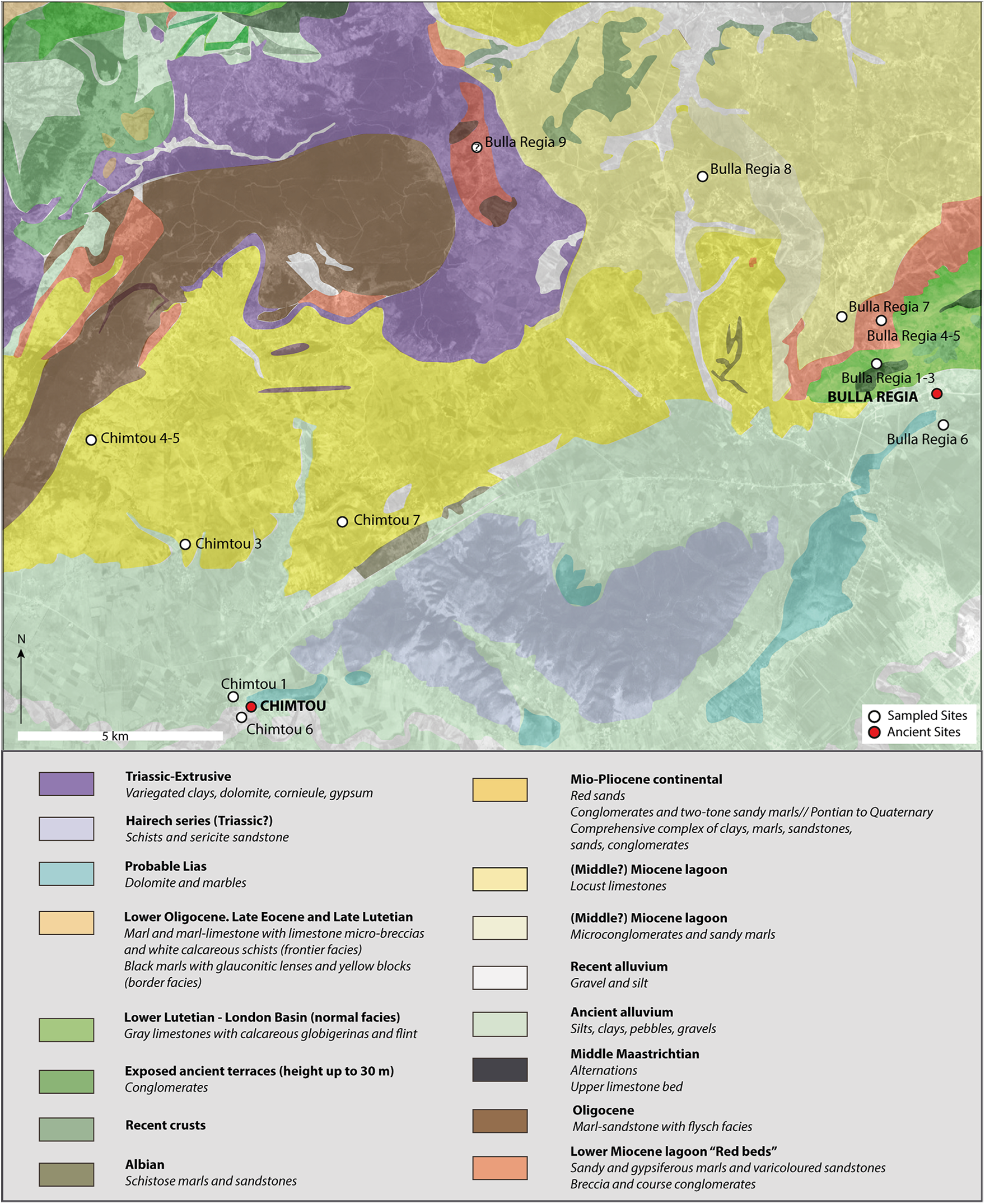
Figure 9. Geological map with surveyed sites – after P. Sainfeld and Ch. Gottis (1948-1949), published by the Geological Service of the Directorate of Public Works of Tunisia (Mines, Industry and Energy Service). (HM).
Ceramic petrography
In general, the samples are petrographically fairly homogeneous, and distinct fabrics were not easy to distinguish. The situation is complicated by the fact that sherds also exhibit different degrees of vitrification and were altered post-depositionally to a varying extent. In addition, the sherds have a fine fabric dominated by quartz and are thus more difficult to split into fabrics. Nevertheless, five classes were defined (Figure 10), mainly in terms of textural characteristics. The fabrics have been numbered following the sequence created for North African ceramics in our previous study published in Occari et al. (Reference Occari, Möller, Fenwick, Quinn, Freestone, Chaouali and von Rummel2024). Petrographic fabrics can be thought of as ‘recipes’ that reflect the use of specific combinations of raw materials and paste preparation techniques (Quinn Reference Quinn2022, 89–97). In this case, the subtle differences between the fabrics may also reflect natural variation in the raw material sources or intrinsic variability within a single batch of clay.
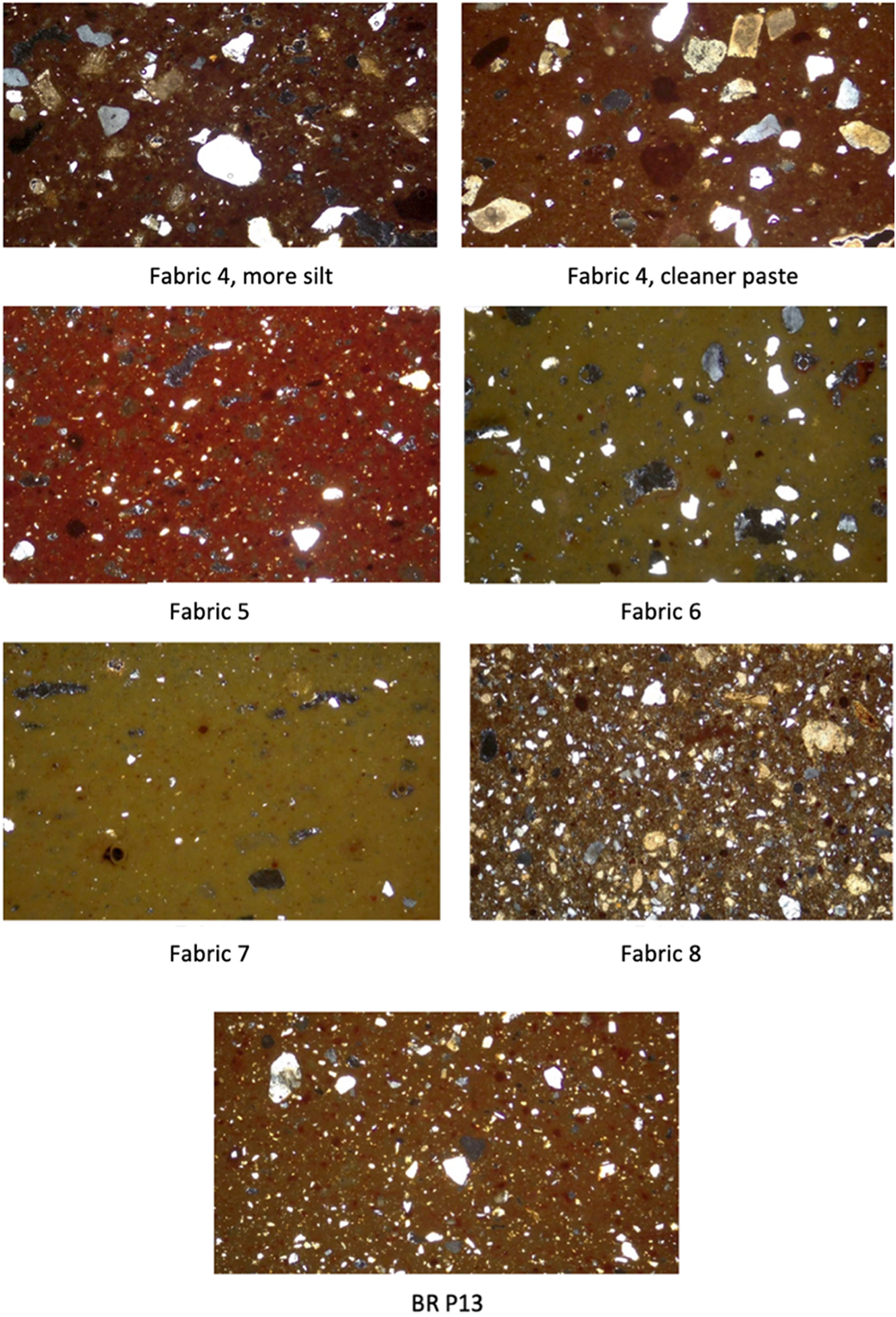
Figure 10. Thin section photomicrographs of the five main petrographic fabrics and one outlier detected in 57 painted ceramics. The fabrics differ mainly in terms of textural features. All images taken in crossed polars (XP). Image width=3.2 mm. (VO).
Petrographic Fabric 4: Dominant quartz and calcite. This fabric is represented by the majority of the thin sections analysed (34/57). It is characterised by the occurrence of medium grained sand temper (mode 0.30 mm) added to a calcareous base clay with variable amounts of medium and course silt-sized inclusions (abundance of silt-size inclusions ca. 5–10%) (Figure 10). It contains ca. 10% rounded to sub-angular sand-sized inclusions of monocrystalline quartz, as well as ca. 5–7% rounded to angular, elongate and rhombic micritic limestone. Rounded iron-rich inclusions and aggregates are also present (ca. 3–5%). Less common inclusions include siltstone, and rare chert (less than 2%). The presence of temper is indicated by the often bimodal grain size distribution of the inclusions in the samples in which there is a gap between the sand and silt grades, or in some cases a lack of silt grains. It appears that loose, relatively rounded sand to silt-sized quartz was added as temper to a finer calcareous base clay. The base clay varies in terms of the proportion of silt-sized inclusions from fairly silt-rich to more ‘clean’ silt-poor material, which is often iron-rich. The silt-sized inclusions are dominated by angular quartz. Tests of foraminifera microfossils and shell fragments are also occasionally present. The clay matrix (abundance ca. 64–75%) is optically inactive and has a light-brown to a red colour. Many limestone inclusions have decomposed leaving characteristic vesicles or vughs (abundance ca. 2–4%), some with a calcareous rim. Patchy secondary calcite precipitated during burial is also visible in the matrix. The samples contain few thin elongated planar voids, likely due to the shrinkage of the clay paste during drying and restricted by the quartz inclusions. This fabric exhibits variation between samples in terms of the colour of the matrix, the presence of microfossils, the abundance of secondary calcite in the matrix as well as the abundance of sand temper added. Little variation exists in terms of the size of the sandy material, even though samples BR P17, Chi P36 and Chi P38 may contain slightly coarser sand inclusions. Two samples (Chi P12 and Chi P13) have slightly better sorted inclusions compared to the other samples of this group.
The samples in Fabric 4 are related to Fabric 5, described below, and bear similarities with Fabric PR8, published in Sacco (Reference Sacco2024, 308), corresponding to an unglazed medieval ceramic found in Sicily and possibly originating from Northern Tunisia.
Petrographic Fabric 5: Fine, silty clay. This fabric includes seven samples. It is characterised by the presence of ca. 15–20% rounded to angular fine-grained sand and silt-size quartz inclusions in an iron-rich clay (Figure 10). Sand-size quartz inclusions are generally smaller than in the other fabric groups (<0.16 mm, mode 0.08 mm). As with Fabric 4, the addition of sand and silt-sized quartz as temper is suggested by the presence of some inclusion-free areas, which perhaps represent areas of the iron-rich base clay where temper was incompletely blended. Small (0.03 mm to 0.06 mm, with rare larger inclusions <0.10 mm) rounded calcareous inclusions and numerous iron-rich spherical inclusions are also common (abundance ca. 10%). Less frequent inclusions include microfossils, mainly foraminifera and shell fragments. The matrix (abundance ca. 67–72%) is red in colour, with no optical activity, and presents sparse lighter patches of a greenish colour caused by the presence of fine micritic calcite, which might be secondary. The samples contain ca. 3% voids, mainly spherical or vughs-shaped, probably left by decomposed calcareous inclusions. The samples of this fabric group exhibit variation in terms of the abundance of secondary micritic calcite and voids. Overall, these seven samples are related to Fabric 4, but have much finer inclusions.
Petrographic Fabric 6: Highly fired calcareous clay. This fabric encompasses nine samples. It is a distinctive fabric composed of ca. 15–20% moderately sorted, rounded to sub-angular medium-grained sand (mode 0.30 mm) to silt-sized quartz inclusions in a clean calcareous clay (Figure 10). The bimodal distribution of the inclusions suggests that quartz inclusions have been added as temper to a fine calcareous base clay with naturally occurring silt. Several calcareous inclusions are also present in the samples; however, these tend to be partially or almost entirely decomposed, often leaving vesicles or vughs which show a calcareous rim (abundance ca. 3–5%). The clay matrix (abundance ca. 75–82%) is optically inactive and has an olive-green colour that is characteristic of vitrified calcareous clay (Molera et al. Reference Molera, Pradell and Vendrell-Saz1998). This is related to the reaction between the calcite present in the clay used and the clay minerals at high temperatures of ca. 1000°C, leading to the formation of pyroxenes and a glassy phase which reduce the total content of iron available to form iron oxides (Maniatis et al. Reference Maniatis, Simopolous, Kostikas and Perdikatsis1983; Matson Reference Matson and Brill1971; Molera et al. Reference Molera, Pradell and Vendrell-Saz1998). The samples vary mostly in terms of the abundance of limestone inclusions, with sample BR P1 containing more of this material, while Chi P29 contains the lowest proportion. This fabric does not substantially differ from those discussed above, and it may simply represent a higher fired version of Fabrics 4 and 5.
Petrographic Fabric 7: Highly fired calcareous clay, untempered. This fabric includes only one sample in the analysed assemblage (Chi P8, Figures 6a and 10). This homogeneous fabric is composed of the same greenish calcareous clay, characteristic of highly vitrified calcareous clays, as in Fabric 6. The matrix is optically inactive. In contrast to Fabric 6, however, this fabric is almost entirely inclusion free (abundance of inclusions ca. 3%), containing only very few coarse silt-sized quartz (mode 0.04 mm) and rare very fine sand (mode 0.10 mm), suggesting that temper was not added in this case. Therefore, it can be considered as a non-tempered version of Fabric 6, pointing to the use of a different recipe.
Petrographic Fabric 8: Dominant calcite and angular quartz. This fabric includes five samples. It is composed of a calcareous iron-rich base clay with ca. 15–20% of poorly sorted, rounded to angular inclusions of micritic limestone (0.02–0.38 mm (Figure 10). This fabric is not fully homogeneous, showing differences in terms of the amount and proportion of inclusions. Silt and fine sand-sized quartz inclusions (mode 0.12 mm) are predominantly angular to sub-angular in shape and are more abundant than in the other fabric groups (ca. 30–40%). Rounded iron-rich inclusions and microfossils are frequently present. Vesicles and vughs are also present (abundance ca. 7%), probably left by the breakdown of calcareous inclusions during firing. No inclusion-free areas can be observed in the samples. The matrix (abundance ca. 40–50%) has low to no optical activity and presents an heterogeneous colour ranging from red to a light-brown colour due to the presence of numerous secondary micrite crystals sparse in the paste. The samples show variations in terms of the abundance of the sandy fraction, with sample BR P7 containing the highest proportion, as well as the sorting of the inclusions, with samples BR P7 and Chi P5 having better sorting.
Outliers: BR P13 is a petrographic outlier. This fabric is characterised by the presence of abundant, poorly sorted, sub-rounded to angular medium-grained sand-sized quartz inclusions (ca. 20%) in a silty calcareous clay base (Figure 10). The main distinguishing feature is that calcareous inclusions are absent, in contrast to Fabrics 1–5. Iron nodules are also frequent (ca. 7%). No other inclusions can be identified. The matrix (abundance ca. 73–80%) is isotropic of a light-brown homogeneous colour. Owing to the rather generic nature of this fabric, it has not been possible to relate it to other published examples.
Petrographic analysis of the presumed local tubuli sherds from Chimtou and Bulla Regia indicated that all samples except one (BR Tub 11) have a fabric very similar to Fabric 4, although the tubuli tend to have slightly more abundant quartz inclusions, which might have been added as temper (Figure 11). Sample BR Tub 11 is comparable to Fabric 5, having finer and less abundant inclusions. One sample (Chi Tub 5) presents a lighter-green calcareous clay matrix, which can be observed both macroscopically and in thin section, suggesting higher firing temperature for this sherd, similarly to what has been observed for the painted wares (Figure 11). Macroscopically, this sample contains very dark inclusions of different dimensions that under the microscope can be identified as iron-rich inclusions which are likely to have nucleated during the firing of a carbonate-rich clay (Nodari et al. Reference Nodari, Marcuz, Maritan, Mazzoli and Russo2007).
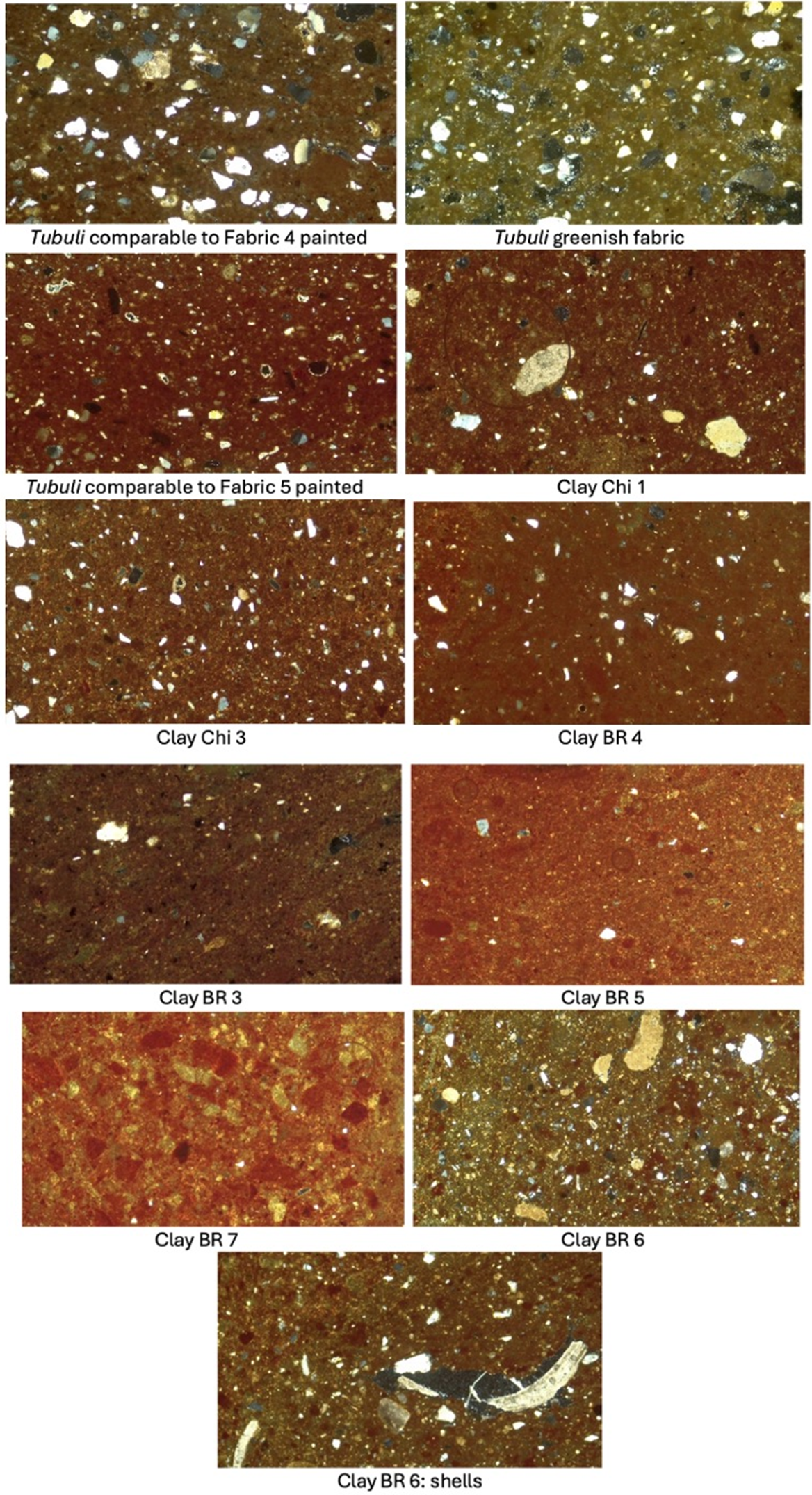
Figure 11. Thin section photomicrographs of the main fabrics detected in the architectural tubuli analysed and of those of clay sources sampled near the sites showing calcareous fabrics that can be related to the painted wares. Differences between clay samples and ceramics can be accentuated by clay processing methods used by the ancient potters. All images taken in crossed polars (XP). Image width=3.2 mm. (VO).
In thin section, Fabric 4 exhibits similarities with several of the raw clay samples collected. Some differences between possible clay sources and archaeological ceramics are to be expected due to the different processing of raw materials by potters (e.g. addition or removal of material, tempering) as well as by alteration during firing and post-depositional processes. Clay samples Clay Chi 1 and Clay Chi 3 are characterised by a calcareous clay with silt-sized and less frequent sand-sized quartz grains, and micritic limestone clasts (Figure 11). Clay Chi 3 also contains rare foraminifera. Iron nodules are present in both samples. Clay BR4 has a composition comparable to Clay Chi 1 and Clay Chi 3, but presents a somewhat cleaner matrix, with less silt-sized grains (Figure 11). Clay BR 5 also presents a similar composition. However, it is characterised by a considerably lower proportion of grains. Clay BR 6 has a composition characterised by numerous silt and sand-sized quartz grains as well as micritic limestone grains in a calcareous clay matrix. Shell fragments are also visible (Figure 11). This sample can also be related to Fabric 4, while also showing similarities with Fabric 8 due to its higher proportion of micritic limestone inclusions. The other clay samples collected were also analysed in thin section but differ from the painted ware ceramics in thin section and so can be excluded as possible clay sources.
Geochemical characterisation and classification
The concentration of 55 measured elements (and oxides) for 94 samples was determined using LA-ICP-MS. The samples analysed encompass the painted wares and comparative materials (the large storage jars, architectural tubuli and raw clay samples). The concentration of 22 elements which are less likely to have been affected by post-depositional alteration, and which showed variation in the samples, have been examined in order to identify possible geochemical patterns. While all samples, except one (see below), can be classified as calcareous ceramics, with CaO contents of ca. 20%, CaO has been excluded from the analysis due to the presence of secondary calcite in several analysed samples. A plot of principal components 1 and 2, which explains 66% of the total variance, shows that the painted wares can be divided into two main groups, here called Painted 1 and 2 (Figure 12). The great majority of the painted wares analysed fall into group Painted 2 and appear quite compositionally homogeneous (Table S2 in supplementary material). Painted 1 consists of eight samples from Chimtou, which show higher concentrations of heavy minerals-related elements such as zirconium and hafnium relative to the dominant group Painted 2 (Figure 12). A comparison of the geochemical patterning with the petrographic fabrics identified indicates that the minor differences observed in terms of fabric texture are not reflected in the composition, thus highlighting the uniformity of the group in terms of type and nature of inclusions. The exception is the petrographic outlier (sample BR P13), which also presents a composition which is clearly different, being characterised by lower levels of Na2O, MgO, MnO, Fe2O3, Ni and Co compared with the other painted ware samples. Importantly, this sherd is non-calcareous, with CaO contents well below 1% (Figure 12; Table S2 in supplementary material).
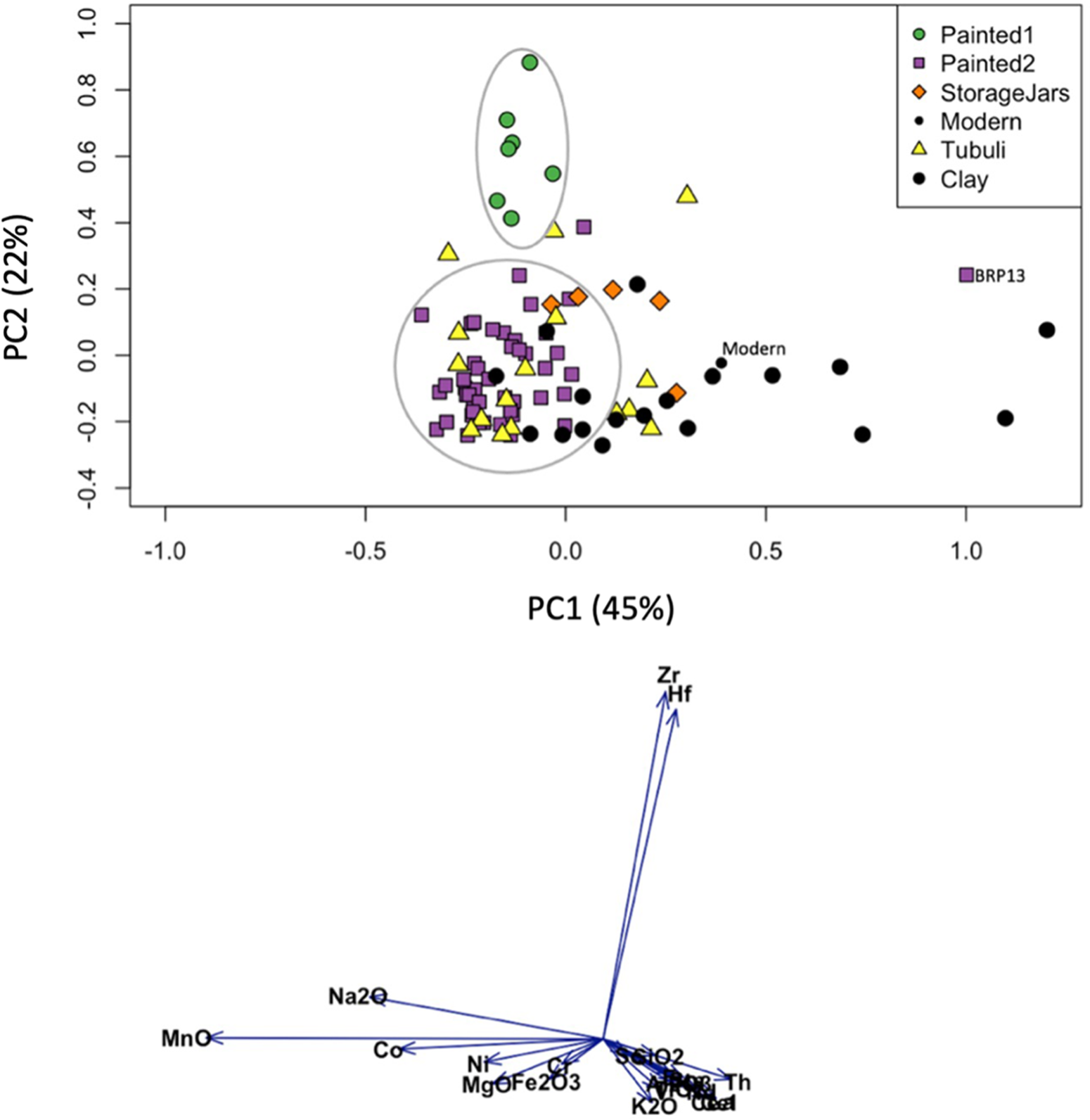
Figure 12. PCA of the 22 ceramic elements/oxides using log-ratio transformed data for the painted wares, storage jars, tubuli and raw materials samples (upper). Plot of loadings for components 1 and 2 determining the geochemical patterning (below). (VO).
The comparative ceramics analysed showed that the majority of the tubuli have a similar chemical composition to group Painted 2, confirming the similarity observed in petrographic analysis. A sub-group of four sherds of tubuli differ mainly by having lower contents of Na2O, MgO and MnO compared with the main group, while SiO2 contents tend to be higher (Figure 12; Table S2 in supplementary material). Three tubuli sherds have a composition similar to that of group Painted 1, although it is not a clear match (Figure 12). The storage jars analysed have a somewhat comparable composition to that of Painted 2; however, they tend to form a separate group, as can be seen in Figure 12. This might be due to differences in the preparation and processing of the clay, or it might indicate the use of a slightly different clay source.
The 19 processed clay samples present some variability in terms of composition, sometimes even between samples collected in areas very close to each other (e.g. BR 1 and BR 2, in Table S2 in supplementary material), suggesting that factors such as the depth at which the clay has been collected may affect the resultant composition. This is likely to be due to the samples coming from different layers in these sedimentary clay sources. Nevertheless, Figure 12 shows that several clay samples have a related chemical composition to that of the main group of painted wares (Painted 2), suggesting that these locales might have been used as a source of raw material. Average linkage HCA shows that group Painted 2, clay samples BR5, BR6, BR7 and most tubuli (nine samples) are in the same cluster (Figure 13). The storage jars and clay sample BR2 form a separate sub-cluster, which nonetheless shows strong similarities with the main group (Figure 13). Group Painted 1 was also detected as a separate group via HCA (Figure 13), forming a small cluster which includes the three tubuli mentioned above (Tub 3, 10, 12), but no match with the clay samples has been found. The other clusters detected via HCA include one group consisting of four raw material samples, and one formed by four tubuli (Tub 13, 14, 15, 16), the one modern sherd, as well as several different clay sources, including Chi 3, Chi 7, BR4 and BR 8. The clay samples from Sejnane (S1, S2, SW) are clearly separated from the other groups and show similarities with sample BR P13, a petrographic and chemical outlier, as well as with other non-calcareous clays from Chimtou (Clay Chi 4, 5) (Figure 13). While clay sample BR1 is also part of the same cluster due to its similarities in terms of trace element composition, this clay source is highly calcareous (Table S2 in supplementary material) and thus it is clearly different.
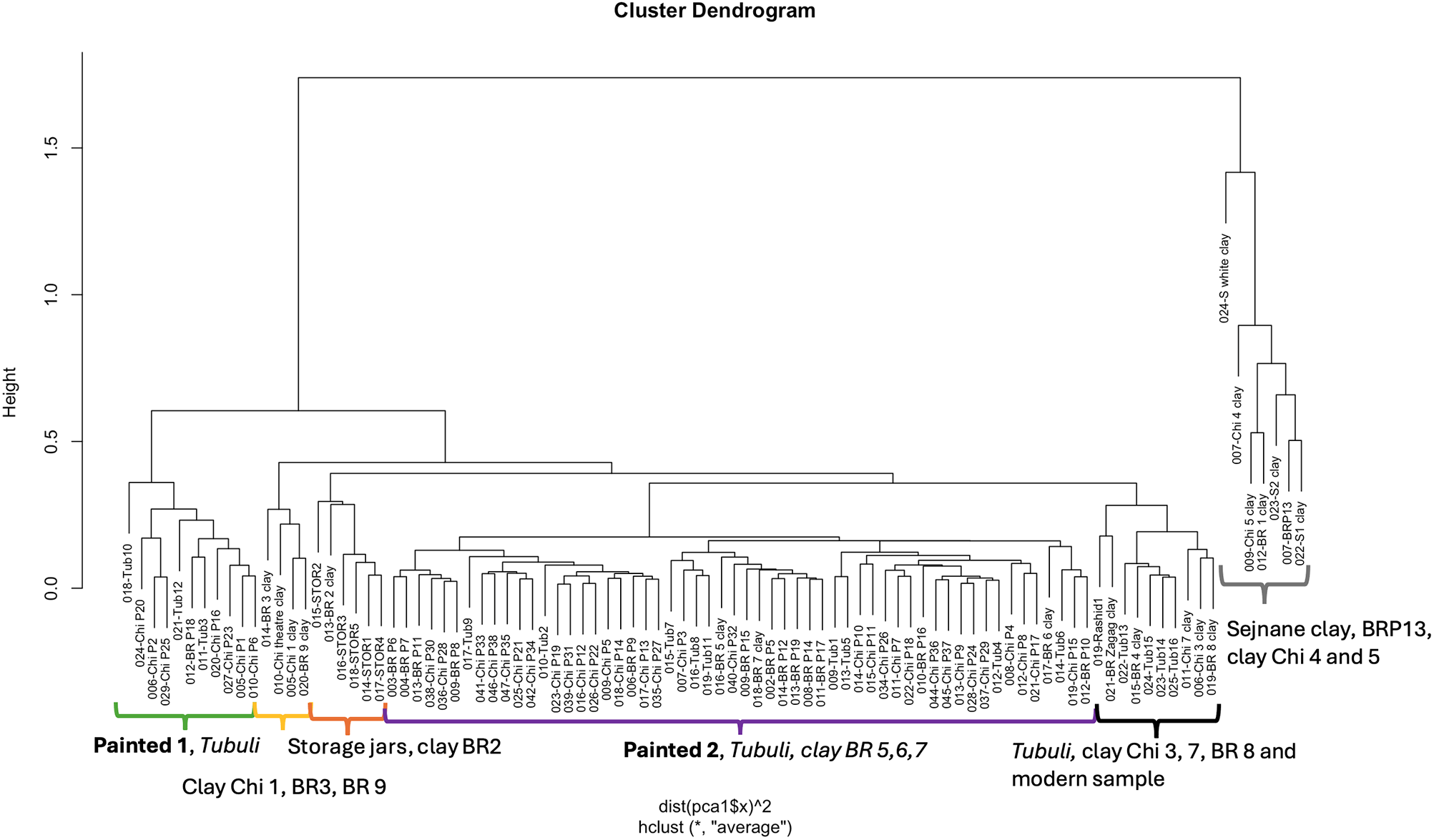
Figure 13. HCA results in the form of a dendrogram, using the average-linkage method. (VO).
Raman analysis of pigments
Raman spectra have been recorded on different shades of red and brown areas of 20 painted ceramic samples to include all the hues present and main decoration patterns. The results show that the pigment used to obtain different shades of red and brown is mainly hematite (Fe2O3). Notwithstanding some differences in band positions and their relative intensities, hematite can be identified by the characteristic bands at around 295, 412, 610 cm -1 which correspond to the Fe-O symmetric bending vibrations, while those at around 228, 500 cm-1 correspond to symmetric stretching vibrations (Figure 14a) (Burgio and Clark Reference Burgio and Clark2001; David et al. Reference David, Edwards, Farwell and De Faria2001; Edwards et al. Reference Edwards, Newton and Russ2000; Marshall et al. Reference Marshall, Dufresne and Rufledt2020). The origin of the band observed at around 1310 cm-1 is debated, with some scholars attributing it to other vibrational modes of hematite, while others attribute this band to a burnt organic matter (de Faria and Lopes Reference de Faria and Lopes2007; Marshall et al. Reference Marshall, Dufresne and Rufledt2020). Individual coarser red particles gave particularly strong bands for hematite, while finer particles gave weaker spectra. A quartz band at around 148 cm-1 is also observable in some of the red pigments analysed (Figure 14b), probably resulting from the quartz present in the ceramic body (Krishnamurti Reference Krishnamurti1958), although hematite might also have been mixed with sand. In the majority of the samples (17/20), hematite is present in combination with magnetite, discernible by the characteristic intense band at around 665 cm-1 (Figure 14b) (Goodall et al. Reference Goodall, Hall, Viel and Fredericks2009; Hanesch Reference Hanesch2009; Marengo et al. Reference Marengo, Aceto, Robotti, Liparota, Bobba and Pantò2005; Rosado et al. Reference Rosado, Van Pevenage, Vandenabeele, Candeias, da Conceição Lopes, Tavares, Alfenim, Schiavon and Mirão2018). However, an additional Raman band at around 660 cm-1 can also appear as a result of a disordering in the crystal lattice due to different factors such as heating, grinding and weathering (de Faria and Lopes Reference de Faria and Lopes2007; Zoppi et al. Reference Zoppi, Lofrumento, Castellucci and Migliorini2005).
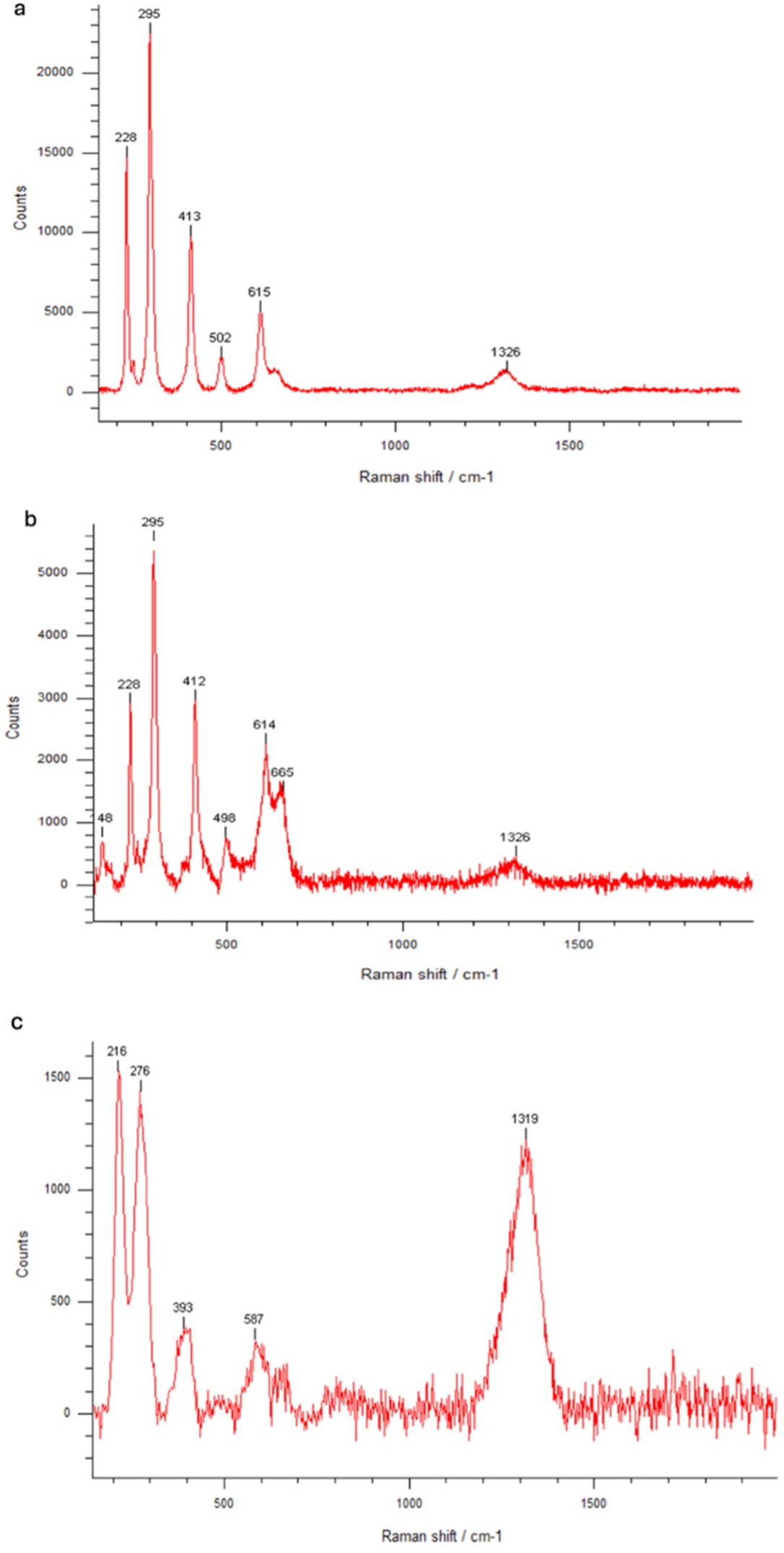
Figure 14. Examples of Raman spectra of red and brown pigments attributed respectively to hematite (sample Chi P22) (a), hematite combined with magnetite (sample BR P8, dark areas) (b) and goethite (sample Chi P14) (c). (VO).
Under the microscope, the dark-brown decorations contain predominantly large dark particles of magnetite as indicated by its characteristic strong signal at around 665 cm (Figure 14b) (Goodall et al. Reference Goodall, Hall, Viel and Fredericks2009; Hanesch Reference Hanesch2009; Marengo et al. Reference Marengo, Aceto, Robotti, Liparota, Bobba and Pantò2005; Rosado et al. Reference Rosado, Van Pevenage, Vandenabeele, Candeias, da Conceição Lopes, Tavares, Alfenim, Schiavon and Mirão2018), although a smaller proportion of fine red particles are also present and have been identified as hematite, showing bands at around 228, 295, 412, 506, 615 and 1320 cm -1. As a band in the region of 640–650 cm-1 is also characteristic of manganese oxide, one of the principal components detected in black and dark-brown paint worldwide since ancient times (Siddall Reference Siddall2018; Vermeersch et al. Reference Vermeersch, Pincé, Jehlička, Culka, Rousaki and Vandenabeele2022), a sub-selection of three samples showing dark-brown decoration were also analysed using p-XRF. This is because the identification of manganese oxides by Raman is challenging, as these are known for being weak Raman scatterers, while they are also easily subjected to thermal heating due to the laser and this can lead to structural and phase modifications which further hamper the interpretation of the spectra (Bernardini et al. Reference Bernardini, Bellatreccia, Casanova Municchia, Della Ventura and Sodo2019; Caggiani and Colomban Reference Caggiani and Colomban2011). P-XRF analysis of the dark-brown paint decorations revealed that manganese is present only in traces, thus excluding its potential use as colourant, while it confirmed the presence of iron, which was detected in high quantities of ca. 8% wt. Raman spectra of a light brown-yellowish area of one sample (Chi P14) present bands that can be attributed to the mineral goethite, and particularly the characteristic band at 393 cm-1 (Figure 14c) (Froment et al. Reference Froment, Tournié and Colomban2008).
The compounds detected for the red and brown areas (hematite, magnetite and goethite) indicate that the main pigments used for the red and dark red/brown paint are iron oxides/hydroxides. It is widely recognised that the mineral hematite is also the main colouring compound constituting red ochres, while yellow-light brown ochres are based on other iron-containing mineral phases such as goethite, limonite and lepidocrite (Froment et al. Reference Froment, Tournié and Colomban2008; Mastrotheodoros and Beltsios Reference Mastrotheodoros and Beltsios2022). The term ‘ochres’ broadly refers to iron oxide and iron hydroxide-rich powders which are admixed with variable amounts of sand and clay (ibid.). Hematite can also be formed by the thermal treatment of goethite at a relatively low temperature of ca. 260°C–280°C due to a dehydration process, and several studies have attempted to discriminate between the use of heated goethite and natural hematite by Raman spectroscopy, but this has proven challenging and is still under debate (e.g. de Faria and Lopes Reference de Faria and Lopes2007; Lin et al. Reference Lin, Natoli, Picuri, Shaw and Bowyer2021). Goethite has been identified as the chromophore of the light-brown yellowish pigment present in one sample (Chi P14). While goethite is usually responsible for a yellow hue, goethite shifts from green-yellow to brown-yellow with increasing grain size (Buxbaum and Pfaff Reference Buxbaum and Pfaff2005). Firing conditions are responsible for the formation of the characteristic colouring mineral, with oxidising conditions producing red hematite, while under reducing conditions hematite is converted to magnetite at a temperature between 600°C and 900°C, conferring a dark colour (Mastrotheodoros and Beltsios Reference Mastrotheodoros and Beltsios2022). The specific hue of ochre can also be influenced by other chromophores present in the mixture, such as manganese oxide (black), carbon (black) – here not present – as well as by the grain size of the powder and the overall uniformity in size, suggesting that the latter might also be responsible for the different hues observed (Mastrotheodoros and Beltsios Reference Mastrotheodoros and Beltsios2022; Siddall Reference Siddall2018). Thus, the results suggest the use of a single raw material (hematite/ochre) for the red and brown paint decorations and a range of different firing atmospheres to obtain the desired final colour. The use of iron-bearing compounds as pigments has been documented globally since the prehistoric period due to their natural abundance (Mastrotheodoros and Beltsios Reference Mastrotheodoros and Beltsios2022). In Tunisia, iron deposits as well as iron-rich clay deposits are common throughout the country (Tekki Reference Tekki, Sehili, Shili and Grira2020, 54–56). Given the availability and accessibility of suitable raw materials for the red and brown paint, these were most likely sourced locally.
Discussion: painted ware production centres
A new production centre in the western Medjerda
Petrographic analysis of 57 samples of painted ceramics identified five petrographic fabrics which are closely related to each other in terms of type of inclusions and are separated only by textural differences. The petrographic similarity of the sherds is confirmed by the chemical analysis, which indicates that the great majority of the painted ware samples belong to a single group (Painted 2). This suggests that the minor differences between the five petrographic fabrics may represent variation within a single clay deposit or may be due to different firing conditions or, more likely, that a variety of different clay deposits were exploited within the same region by different workshops and thus these share very similar chemical compositions. A smaller group of seven samples (Painted 1), richer in zirconium and hafnium, may have been produced in a separate workshop which had access to a clay source that is richer in heavy mineral content, but is otherwise very similar to the clay employed to produce the main group of wares. One sherd (BR P13) has been manufactured using a non-calcareous clay, which is geochemically similar to clay samples Clay Chi 4 and 5, suggesting that this might also have been manufactured locally. However, the similarity in terms of geochemistry of this sherd with raw material samples from Sejnane might also indicate that the ceramic was imported, thus supporting Peacock’s (Reference Peacock, Fulford and Peacock1984: 16) suggestion that the region was a centre of production of painted wares. The chemical groups identified do not appear to relate to typological differences in the assemblage.
Though no kilns manufacturing painted wares have yet been identified in, or near, Bulla Regia and Chimtou, the use of a calcareous clay rich in quartz and micritic limestone inclusions strongly suggests a production in the Medjerda Valley for the analysed painted ceramics. The geology of the Medjerda Valley is dominated by the presence of Mesozoic and Cenozoic sedimentary series rich in calcareous material, such as marl and limestone (Bonifay et al. Reference Bonifay, Capelli and Polla2002b). The petrographic and geochemical similarity between the painted wares and clay samples collected near Bulla Regia and Chimtou suggests that local calcareous clays were exploited to manufacture the painted wares. A local production is further supported by the compositional similarity between the main group of painted wares (Painted 2) and large storage jars from Bulla Regia as well as tubuli from both sites, which are very likely to have been manufactured locally. As highlighted above, it is difficult to establish whether Painted 2 wares were the product of a single workshop or whether different workshops or potters exploited very similar clay sources.
Technologically, the painted ceramics found at Chimtou and Bulla Regia appear quite homogeneous, pointing to a shared ‘know-how’ of the potters in selecting raw materials for pot-making and for the painted decoration. All sherds (except one) were made using a fine calcareous base clay, to which sand has been added as temper, probably to decrease the plasticity of the clay, making it easier to handle and shape it into a vessel. Non-calcareous clays are also available near the sites (e.g. clay samples Chi 5, BR 8; Figure 9), but these do not seem to have been exploited for these wares. One possible reason for the preference for calcareous clays is that, apart from their local abundance and availability, they tend to fire to a buff colour (Molera et al. Reference Molera, Pradell and Vendrell-Saz1998), thus serving as a better background for the subsequent painting decoration. The presence of still-intact calcareous inclusions in most of the ceramics suggests that most were fired at temperatures <800°C, or just above 800°C (Drebushchak et al. Reference Drebushchak, Mylnikova, Drebushchak and Boldyrev2005; Gliozzo Reference Gliozzo2020). A firing temperature above >800 can be suggested for those calcareous sherds presenting a more greenish colour (Maniatis et al. Reference Maniatis, Simopolous, Kostikas and Perdikatsis1983; Molera et al. Reference Molera, Pradell and Vendrell-Saz1998), as also suggested by the degree of decomposition of calcareous inclusions. The paint uses the same type of iron-bearing compounds as pigments, while the ceramics are also relatively homogeneous in terms of painted decoration, although some differences can be observed between the decorative motifs of closed and open shapes, as discussed above.
Painted wares: multiple regional productions
Recent work has identified the existence of different regional – or sub-regional – economies in late antique and early medieval North Africa, some of which were largely dependent on Mediterranean trade, while others focused more on ‘local’ markets (Bonifay Reference Bonifay and Lavan2013, Reference Bonifay, Bockmam, Leone and von Rummel2019; Fentress Reference Fentress and Lavan2013, 332; Reynolds Reference Reynolds, Stevens and Conant2016; Fenwick Reference Fenwick2020: 105–28). The petrographic and chemical evidence showing that the vessels at Bulla Regia and Chimtou were probably produced locally is in line with the increased ‘regionalisation’ observed for inland regions in Tunisia, starting from the third century onwards (Bonifay Reference Bonifay and Lavan2013). Painted wares seem to be manufactured locally in several centres for local and regional consumption, similarly to the regionally produced ARS and so-called late antique Rouletted Kitchenware (e.g. Andreoli and Polla Reference Andreoli, Polla, Raaijmakers and Maurina2019, 179). Although archaeometric analyses of APW from other sites are lacking, the different fabrics signalled by Hayes (Reference Hayes and Humphrey1976), Fulford and Peacock (Reference Peacock, Fulford and Peacock1984) and others at Carthage strongly suggest the existence of north-eastern Tunisian workshop(s) that produced painted ware (Peacock Fabric 2.1) – in addition to north-western workshop(s) probably located in the Bulla Regia/Chimtou region. Density of APW at a site may point to the presence of production centres in north-eastern Tunisia as Hayes suggested for Thuburbo Maius. Peacock’s suggestion of a possible production centre in or around Sejnane is worth further exploring through archaeometric analyses of the Carthage APW. The different styles and pastes also suggest that there may have been one or more APW production centres in central Numidia. One highly likely candidate is Tiddis, where kilns have been excavated and direct evidence of production is postulated based on ceramic density in the vicinity of the workshops and wasters in the same fabric (Berthier Reference Berthier2000, 334).
Examination of the forms and decorations in the limited published literature further supports our thesis for a north-western Tunisian and north-eastern Tunisian production group. The APW in the Tell and western Medjerda (‘north-western cluster’) are comparable typologically and decoratively. The single-handled jug (APW 10) from Uchi Maius (Biagini Reference Biagini and Vismara2007, 425.236) has parallels at Chimtou and Bulla Regia; the larger jug is closely related to APW 4a (Biagini Reference Biagini and Vismara2007, 425.237); three different jugs from Aïn Wassel (Andreoli and Polla Reference Andreoli, Polla, Raaijmakers and Maurina2019) are comparable to APW 6–7 and APW 4 (cf. Table 2). The bird motifs from Althiburos and Uchi Maius are also stylistically comparable to the motifs from Bulla Regia and Chimtou, but stylistically different to that of Carthage. Petrographic and chemical data is needed to establish whether the same production centres supplied this large region or whether there are multiple production centres using similar motifs. Conversely, APW in the ‘north-eastern cluster’ of sites (Figure 15) seem to share similar decoration patterns, such as spirals (see Figure 15), and vessel types such as APW 20 and related forms occur on or near the coast (Carthage, Nabeul, Oued Rʿmel), but are otherwise currently unattested in the ‘north-western cluster’.
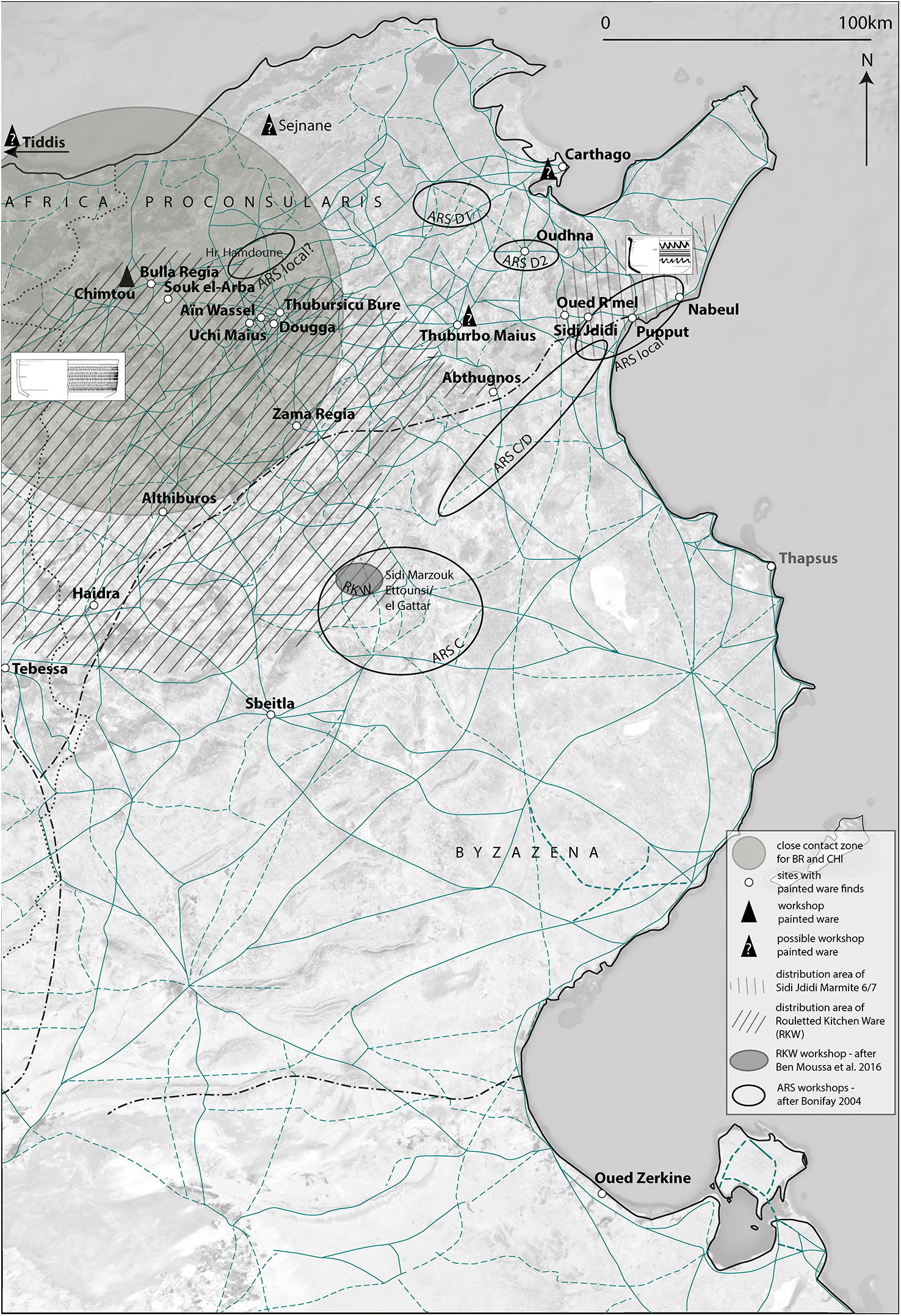
Figure 15. Late Antique workshops and distribution patterns (drawings: Mukai Reference Mukai2016, figure 15.5; von Rummel and Möller Reference von Rummel, Möller, Bockmann, Leone and von Rummel2019, figure 15.40) (HM).
Similar regional groupings appear for Tunisia when considering distributions of regionally produced ARS and so-called late antique Rouletted Kitchenware (RKW). At both Chimtou and Bulla Regia, for example, the assemblages are dominated by regionally produced ARS, probably of an unknown workshop, around Henchir Hamdoune (Bonifay and Capelli for Chimtou ceramics, pers. comm.), which supplied the surrounding area, a phenomenon that was widespread in late antiquity (Bonifay Reference Bonifay and Lavan2013, 542–47). Neither site has large quantities of the ‘classic’ ARS D from north-east Tunisia or ARS C from Central Tunisia which were exported across the Mediterranean. Aside from the few ARS C finds, closer contact between the Central Medjerda Valley and central Tunisia is suggested by the numerous finds of RKW in Bulla Regia and Chimtou. Although the RKW fabrics from Bulla Regia and Chimtou have not yet been examined petrographically, the similarity of forms and decoration to those at Althiburos suggest they could have been produced in the identified workshop near Sidi Marzouk Tounsi/ Oued el Gattar (Ben Moussa and Revilla Calvo Reference Ben Moussa, Revilla Calvo, Kallala and Sanmartí2016, 185). Just as with the APW, there is a similar ‘koine’ of form and decorative technique for RKW in the region spanning from central Tunisia via Althiburos to Chimtou, Bulla Regia, Uchi Maius, Aïn Wassel and Dougga (Figure 15). A similar phenomenon is apparent in cooking pots, where, for example, those from coastal Sidi Jdidi (Sidi Jdidi Marmite 6 and 7; Bonifay Reference Bonifay2004, 235–37) are similar or identical typologically to RKW but distinct in style and technique.
At present the picture suggests multiple local inland workshops operating within a small radius which supplied local areas and influenced each other. This picture of scattered local workshops producing APW with a relatively limited distribution area is consistent with that of the distribution of late antique local ARS productions (Fentress Reference Fentress and Lavan2013, 332 for Numidia; Bonifay Reference Bonifay and Lavan2013, 542–47). As Fentress argues, ceramics were a low-value good and their distribution ‘probably depended on local, periodic markets, never more than 2 days at most from the kiln’ (Fentress Reference Fentress and Lavan2013, 332). Nonetheless, some APW decoration patterns (e.g. grit-pattern: DP (3), Figure 5) and vessel forms do seem to circulate across a much larger region (Figure 16). APW 12 small bowls (Figure 15), for example, are known from Abthugnos (Ben Nejma et al. Reference Ben Nejma, Torchani, Touihri and Marbet2023, 426, Figure 16), Nabeul (Bonifay Reference Bonifay2004, 302.1) and Carthage (Kalinowski Reference Kalinowski and Stevens1993, 174.33), but are also found in Bulla Regia and also in Tiddis (Amraoui Reference Amraoui2017, 297, Figure 310.4–5) though with different decorative pattern. Those examples suggest the presence of a wider ‘koine’ of painted ceramics with a shared repertoire of motifs and forms that could be drawn upon by local potters for local markets.
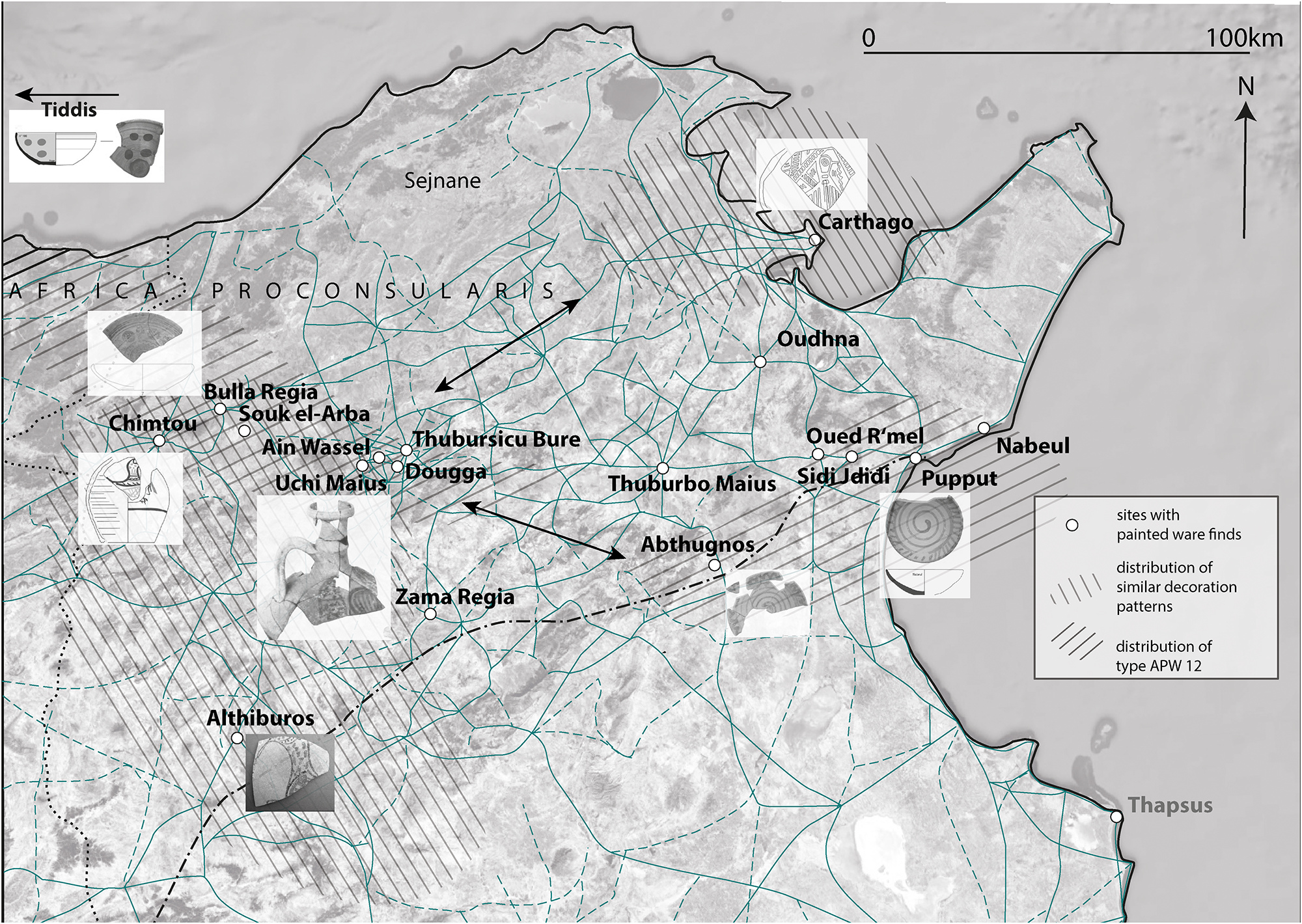
Figure 16. North-western and north-eastern production groups: BR/CHI APW 12 and BR/CHI DP (2) (photos/drawings: Bonifay Reference Bonifay2004, 302, Figure 169.1; Ben Nejma et al. Reference Ben Nejma, Torchani, Touihri and Marbet2023, 425.; Fulford Reference Fulford, Fulford and Peacock1984, Figure 89; Biagini Reference Biagini and Vismara2007, 425.23; von Rummel and Möller Reference von Rummel, Möller, Bockmann, Leone and von Rummel2019, figure 14.37; Fenwick et al. Reference Fenwick, Chaouali, Alexander, Boom, Cox, Di Muro, Höpken, Hopkinson, Möller, Nikita, Radini and Ray2023, figure 15.6) (HM).
Conclusion
This paper marks the first step in a detailed study of typology, chronology and distribution of late antique African painted wares (APW). For many years, this distinctive ware has been neglected by scholars due to a limited dataset and the challenges of identification and classification. Systematic mapping of the published data shows that APW are found in small quantities in fifth to seventh-century – and some probable early eighth century – contexts at most urban and rural sites excavated in recent decades in northern Tunisia and inland Algeria. However, APW does not appear to have diffused or been produced further south and are not present in well-studied contemporary assemblages from southern coastal Tunisia.
The neighbouring sites of Bulla Regia and Chimtou have comparatively large assemblages of well-preserved painted jugs, pitchers, dishes and bowls from Bulla Regia and Chimtou, which permitted the creation of an APW typology which can be expanded in the future as new forms and variants are identified. Chemical and petrographic analysis identified the first compositional ‘fingerprint’ for the production of APW in the Central Medjerda Valley. Five different fabrics were identified in thin section based on minor textural variations; compositional analysis confirmed the homogeneity of the group for most of the samples analysed, pointing to the use of very similar clay sources. The compositional similarities between the APW and some of the clay samples collected near Chimtou and Bulla Regia suggest that local calcareous clays were probably sourced for their production. A local production is further supported by the compositional similarity between the main group of APW (Painted 2), tubuli from both sites and large storage jars from Bulla Regia. This suggests that workshops producing APW were located at, or near, these two late-antique towns.
Differences between the fabric, decoration and forms of APW found at Bulla Regia and Chimtou, and those of other published APW in North Africa, strongly suggest the presence of multiple APW production centres and fairly limited regional distribution networks. North-western and north-eastern Tunisian production groups have been distinguished, as well as possible groups in less well-studied Algeria. This model of multiple regional production centres producing APW for local and regional consumption fits with patterns identified by scholars for other late antique ceramic productions, such as local ARS imitations and RKW (Rouletted Kitchenware), which were produced locally and did not circulate far. At the same time, the distribution pattern of similar forms and decorations across northern Tunisia and inland Algeria points to a supra-regional ‘koine’, in which know-how, forms and decoration were shared. This koine was not simply a North African phenomenon: regional productions of decorated painted wares with geometric patterns, birds, fish, plants are characteristic of Eastern regions of the Mediterranean from the late fifth or sixth centuries (e.g. Vroom Reference Vroom2004, 297–300) while painted wares with simpler geometric patterns also appear in Italy and the central Mediterranean in the later fifth and sixth century (e.g. Arthur Reference Arthur and Saguì1998). Further research is needed to characterise these often neglected regional productions and understand their development.
The results underscore the urgent need to prioritise the full analysis of commonwares alongside ARS and amphorae in North Africa. The aim of any further analyses must be to combine careful typological study of all the ceramics in context with both petrography and chemical analysis to establish the provenance of wares and technologies and to identify the fingerprints of different workshops. Publications of the complete ceramic assemblages of late antique sites are urgently needed to establish distribution and consumption patterns of different wares at both urban and rural sites and the degree to which regional ceramic supply networks differed for inland and coastal sites in late antiquity. The next step will be to integrate the analysis of the production and distribution patterns of other types of late antique goods (particularly glass and metalwork) to build a more detailed picture of craft organisation, cross-craft interaction and exchange networks in late antique North Africa.
Supplementary material
The supplementary material for this article can be found at https://doi.org/10.1017/lis.2025.4.
Acknowledgements
We thank Salem Ghazouani and Mounir Abdi for guiding us in the Valley, and the fantastic women potters of Bulla Regia and Chimtou for kindly showing us where they collect clay, for sharing with us their manufacturing ‘secrets’ and for welcoming us to their houses and at their table. We are extremely grateful to ISLAMAFR Co-Directors Moheddine Chaouali (MC) and Philipp von Rummel (PvR) for their encouragement with this article and permissions to study and publish the painted wares. We would also like to thank Saskia Büchner-Matthews for assisting with the in-field study of the painted wares and sample selection, Michael Charlton for the use of the UCL Wolfson Laboratory facilities, Russell Bailey, Victoria Lucas and Liam Richards for laboratory support with sample preparation and LA-ICP-MS analysis, and Andrea Martinez for developing the re-calibration of p-XRF. Finally, we thank Prof. Faouzi Mahfoudh, former Director of the Institut National de Patrimoine, and M. Tarek Baccouche, current Director of the Institut National de Patrimoine for their support of the work at Bulla Regia and Chimtou.
Author contributions
Conceptualisation: HM, CF, VO. Sample collection: HM, VO, SBM. Sample drawing and typological analysis: HM, SBM. Maps: HM. Methodology: VO, HM, CF, PQ. Lab analysis: VO. Data analysis: VO, PQ. Data visualisation: VO. Writing original draft: CF, HM, VO, PQ. Funding acquisition: MC, CF, PvR, VO, HM. All authors read and approved the final manuscript.
Funding
This article was written within the project ‘ISLAMAFR-Conquest, Ecology and Economy in Islamic North Africa: The Example of the Central Medjerda Valley’, a tri-national project conceptualised and directed by Moheddine Chaouali, Corisande Fenwick and Philipp von Rummel. This project is funded through a joint scheme between the Arts and Humanities Research Council (AHRC) (Grant no: AH/T012692/1) and the Deutsche Forschungsgemeinschaft (DFG) (Grant no: RU 1511/4–1). Funding for the LA-ICP-MS analysis was provided by the project ‘Painted Ceramics in Tunisia: Tracing Local Production, Regional and Interregional Exchange in Late Antique North Africa’ funded by the British Institute for Libyan and Northern African Studies (BILNAS). A European Research Council grant for the EVERYDAYISLAM Project (Grant no. 949367) supported Corisande Fenwick’s time in writing this article, and a Deutsches Archäologisches Institut (DAI) research grant supported Heike Möller’s time.



















